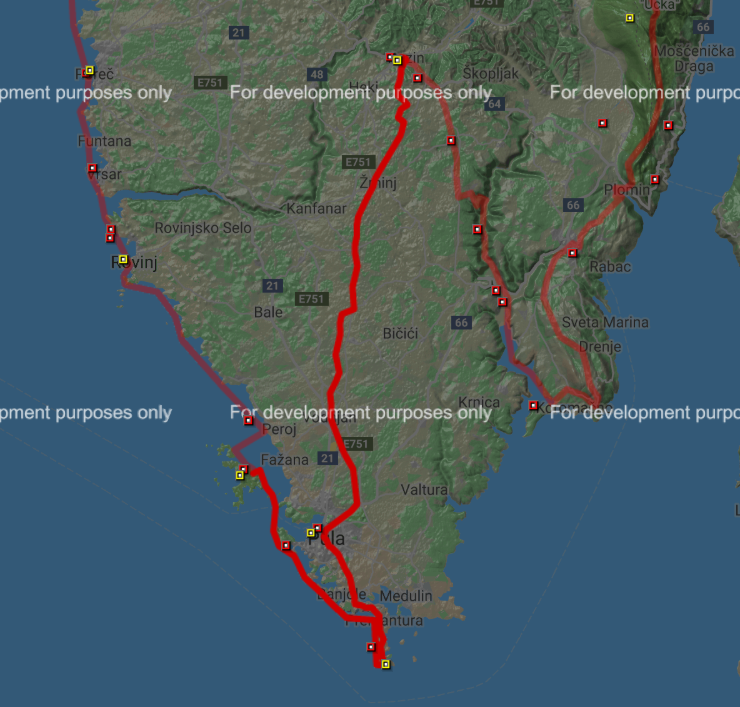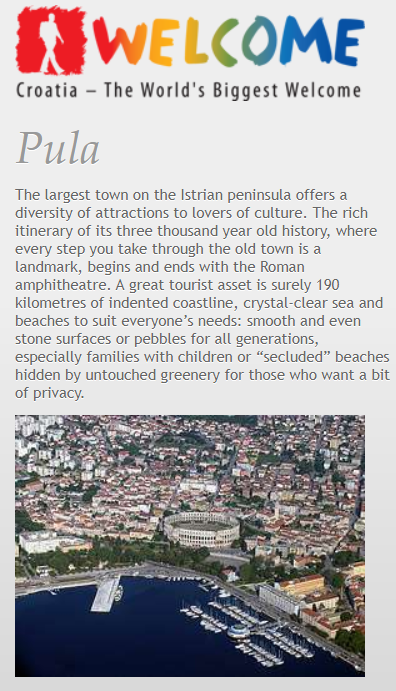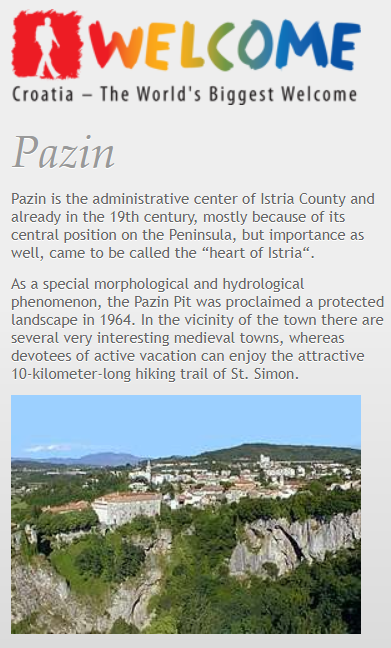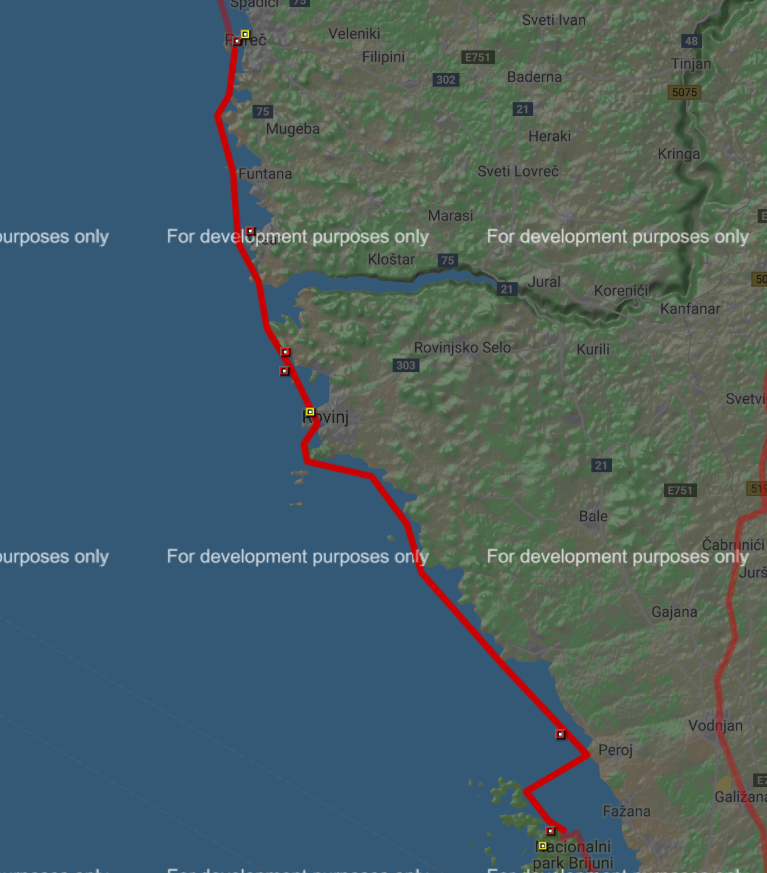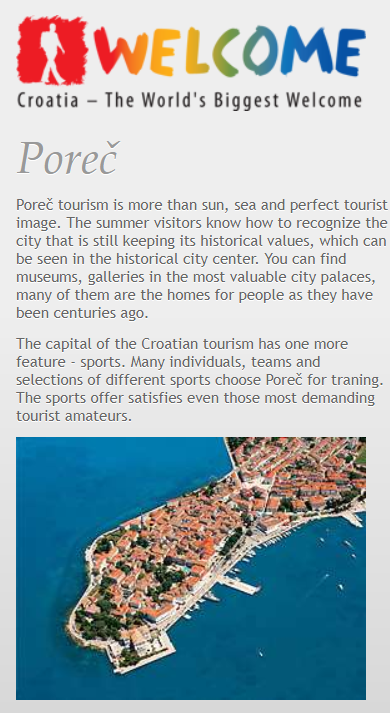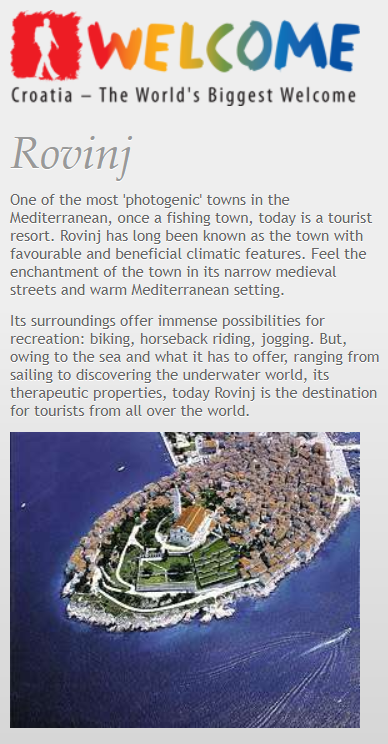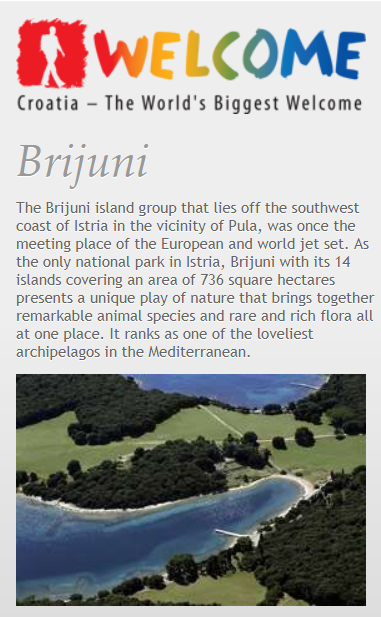5 Ways to Get a Free Week’s Stay in Croatia's Dream Destinations
February 24th, 2022 - If you happen to love spending time outdoors and have a few days to spare this spring or summer, Croatia’s national and nature parks offer amazing volunteering opportunities that involve a free week’s stay in some of the most spectacular locations in the country
We prepared a selection of five attractive volunteer programmes that are 5-10 days long and require up to 6 hours of work a day, with free accommodation, meals and transportation provided to participants. English speakers are encouraged to apply, as knowledge of Croatian isn’t a requirement for any of the following roles:
1. Dry Stone Restorer in Mljet National Park
Become a guardian of the past by restoring ancient dry stone walls in Mljet National Park. Traditional dry stone construction is inscribed in the list of intangible cultural assets of the Republic of Croatia, which means you’d literally help restore and preserve precious cultural heritage on Mljet island!
Volunteers will learn how to build and fix up walls, stairways and other dry stone structures. The job also involves clearing existing dry stone structures of vegetation, simple processing of stone using hand tools, and photographing dry stone walls before and after restoration.
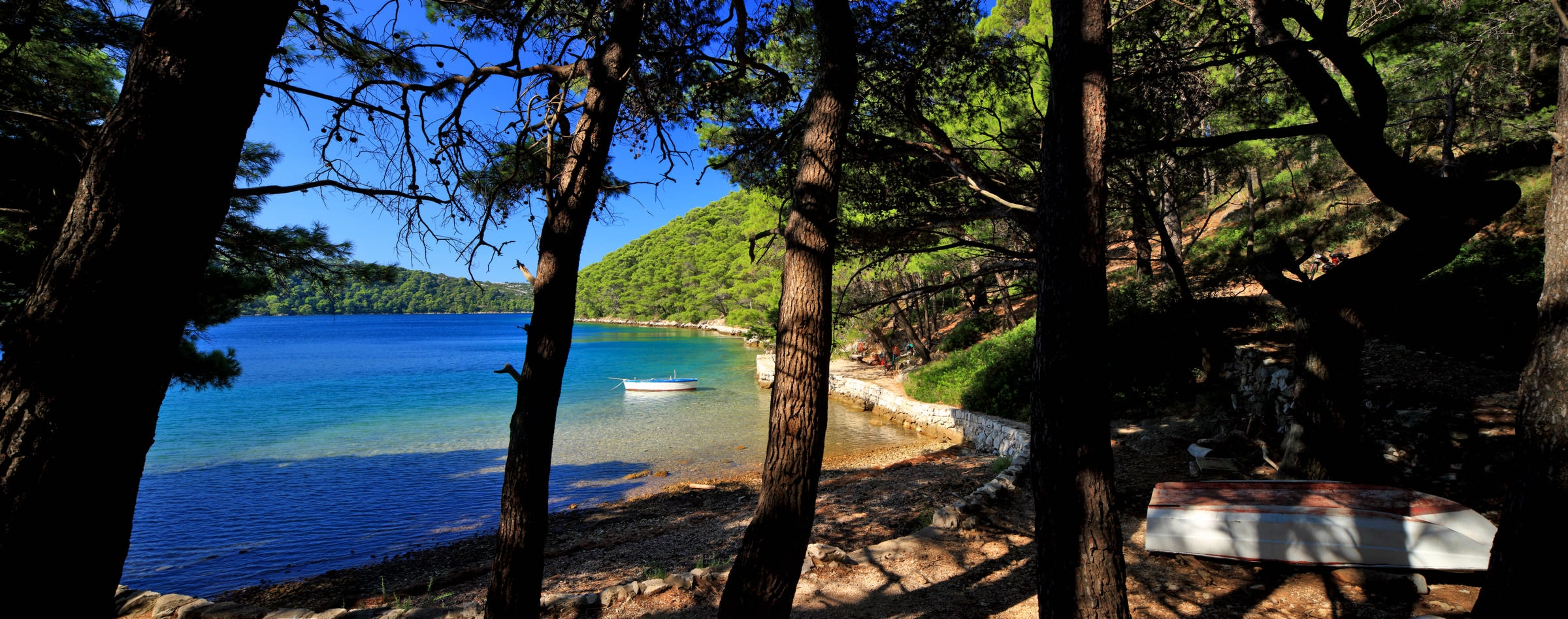 Mljet island / Photo © Mario Romulic
Mljet island / Photo © Mario Romulic
The programme takes place in April and is seven days long, including six days of work and one day off. Volunteers are expected to work six hours a day with a one-hour break, but considering that the physical work involved in this particular programme can be strenuous, the number or working hours can be reduced if needed.
All necessary tools will be provided by the Park. Accommodation is provided free of charge on Mljet island in the Collier building owned by the Park, which has seven rooms equipped with bunk beds, toilets, showers, a kitchen and a living room. Meals are also provided free of charge, with the Park delivering groceries to volunteers or providing free meals at the local hotel.
If stonemasonry isn’t your cup of tea and you’d prefer a less hands-on kind of creative work, may we suggest another volunteer programme on Mljet island:
2. Photo Amateur in Mljet National Park
A dream come true for anyone who loves island hopping and snapping pics of stunning landscapes (don’t we all?), this programme involves photographing the scenery and events in Mljet National Park in the period between April and June.
Depending on the time of year, volunteers will be required to photograph various locations, events and activities on Mljet island using their own gear. You’ll be capturing the island’s flora and fauna, cultural monuments and landmarks, historic sites, enchanting landscapes and fun summer events.
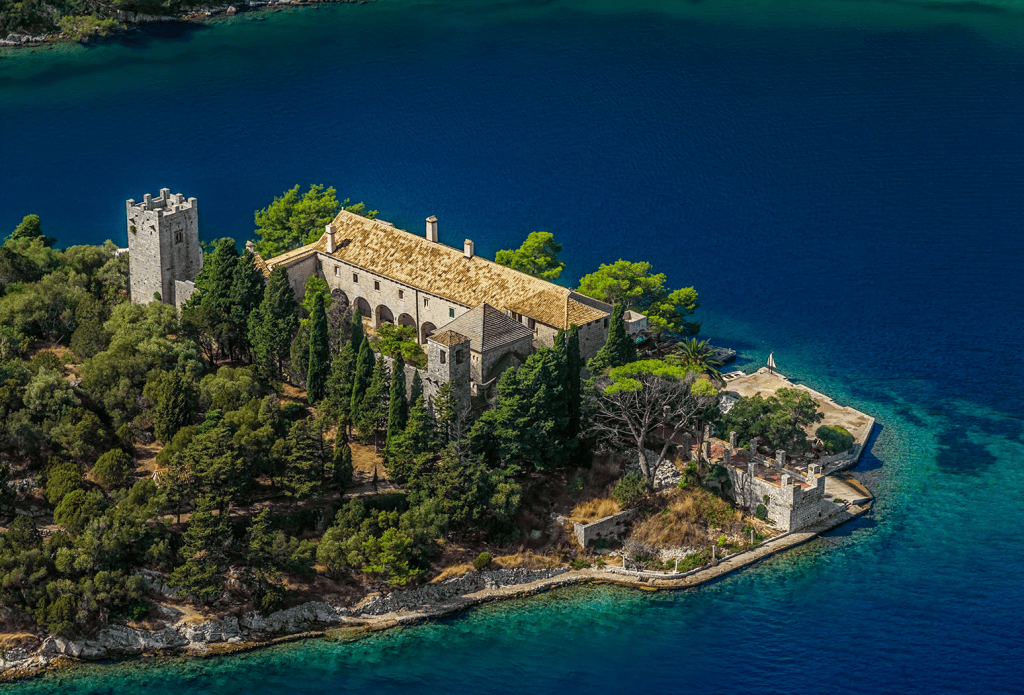 Mljet National Park / Photo: volonteri.parkovihrvatske.hr
Mljet National Park / Photo: volonteri.parkovihrvatske.hr
Those who choose to participate in this particular programme will sign a statement of the assignment of the photos to Mljet National Park. You’ll have to submit the photos shortly after the programme is over, and can look forward to seeing them featured in the Park’s publications in Croatia and abroad.
A minimum of one DSLR camera with a lens is required to partake in this programme.
You’ll have plenty of time to explore the island on your own time, and there’s no shortage of things to do: there are over 40 kilometres of hiking and cycling trails, you can rent a kayak or canoe to explore the saltwater lakes on Mljet, or take diving lessons with a certified instructor.
For all Mljet-based programmes, volunteers are to bear the cost of travel to Mljet island, and the Park will provide transport from the ferry port on Mljet to the place of accommodation.
3. Gull Catcher in Kornati National Park
Are you a fan of the great outdoors and love being in close contact with wildlife? Consider becoming a seagull catcher in Kornati National Park. Don't worry, you'll be releasing them too!
You’ll be joining the Park’s experts as they band and monitor Caspian gulls in the stunning Kornati archipelago, specifically on a few islands where seagulls are known to nest.
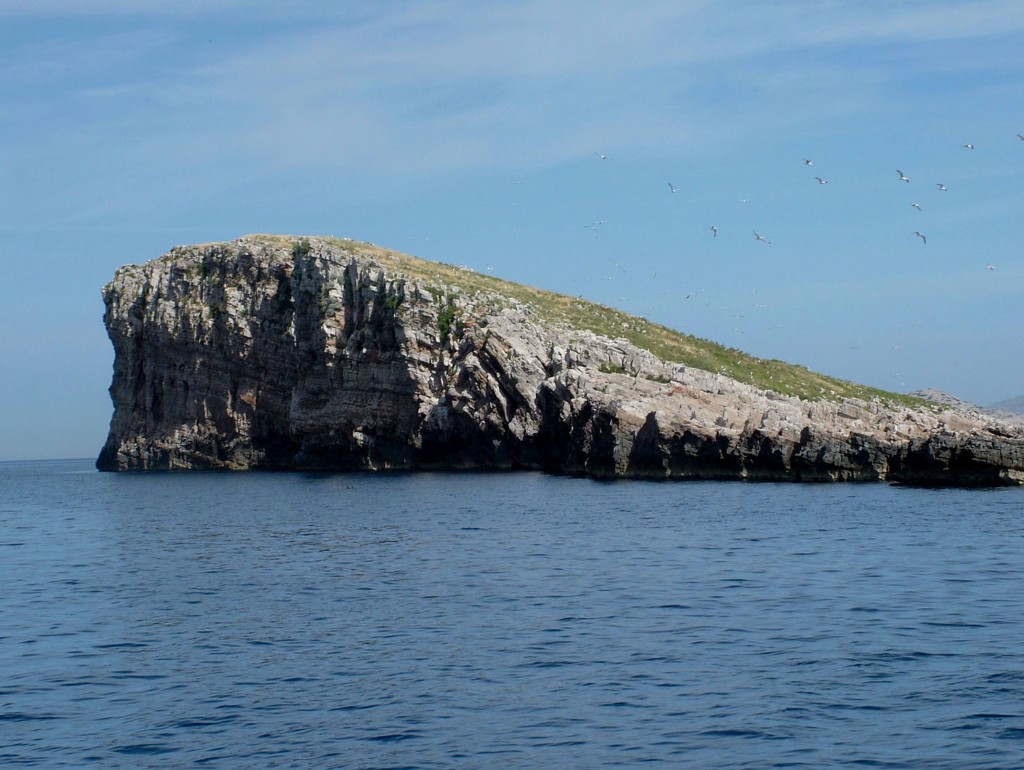 Kornati National Park / Photo: volonteri.parkovihrvatske.hr
Kornati National Park / Photo: volonteri.parkovihrvatske.hr
Do you dare to catch a young gull with your bare hands? If you do, you get to name the bird and take notes as it gets banded by a qualified employee of the Park. Banding and monitoring allows experts to track the behaviour and habitats of seagulls in order to collect data used to ensure protection of the species.
Volunteers will receive training prior to starting work and will be supervised by the Park staff. The programme takes place in May and June lasts about ten days, with volunteers expected to work seven hours a day.
Accommodation is provided and free, and in this case, it’s pretty amazing: you’ll be staying on a sailboat owned by the National Park Kornati, fully furnished and featuring 3 cabins, 6 beds, a living room, kitchen and toilet.
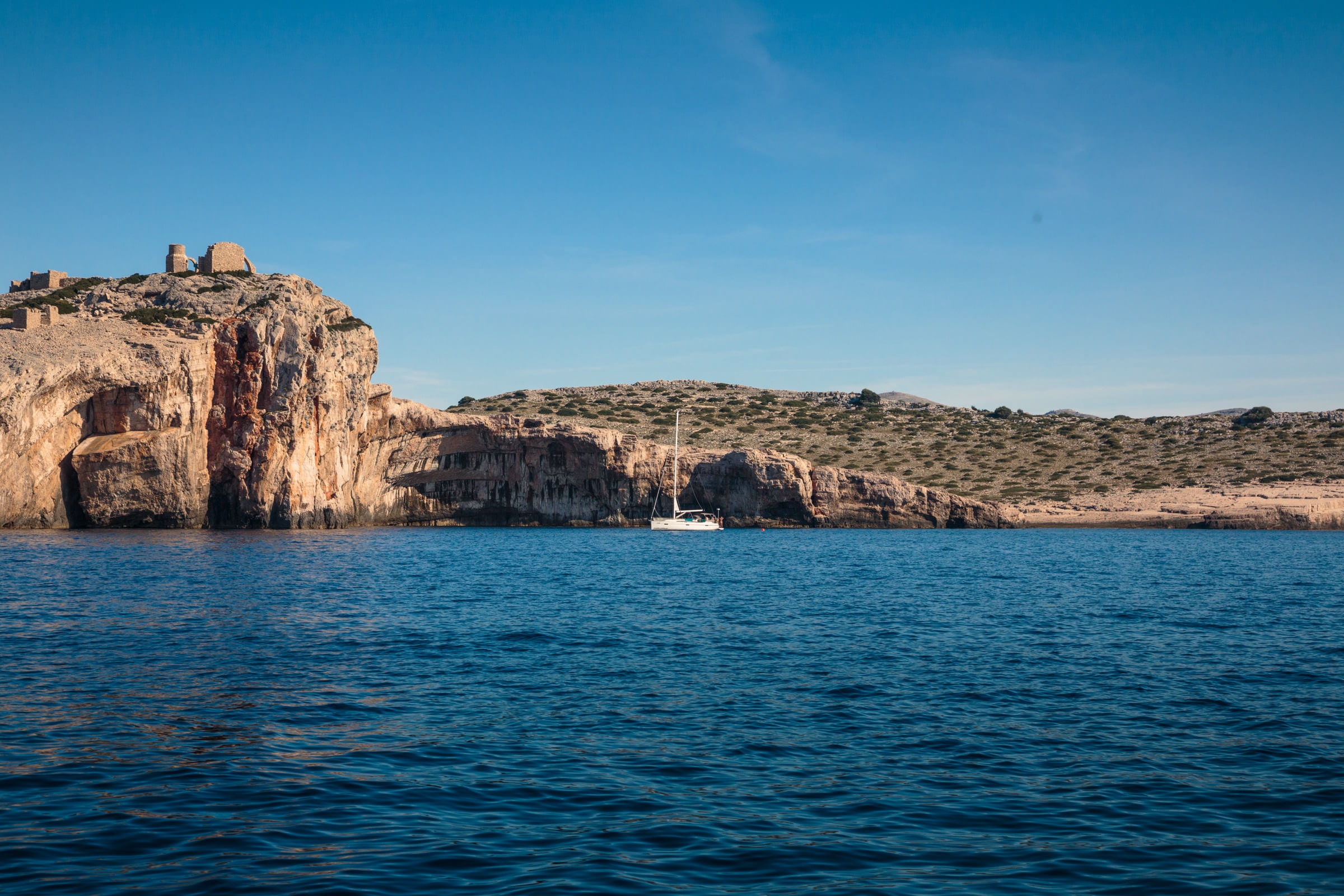 Kornati National Park / Photo © Mario Romulic
Kornati National Park / Photo © Mario Romulic
Groceries are provided free of charge, and volunteers can either prepare meals on their own or seek the help of the volunteer manager.
Volunteers have to arrange transportation to Murter island, while further transport from Murter and within the Park area is organised by the Park and free of charge.
4. Traditional Gardener in Lonjsko Polje Nature Park
Lonjsko Polje (Lonja Field) is the largest protected wetland in Croatia, located approximately 70 km south-east of Zagreb.
If you have a green thumb and don’t mind getting your hands dirty, you’d be a great fit for a traditional gardener in Lonjsko Polje Nature Park. You’d help clean up the untended plots in the Park and plant new seedlings around traditional wooden houses in the villages of Krapje and Čigoč - think of it as traditional landscape design!
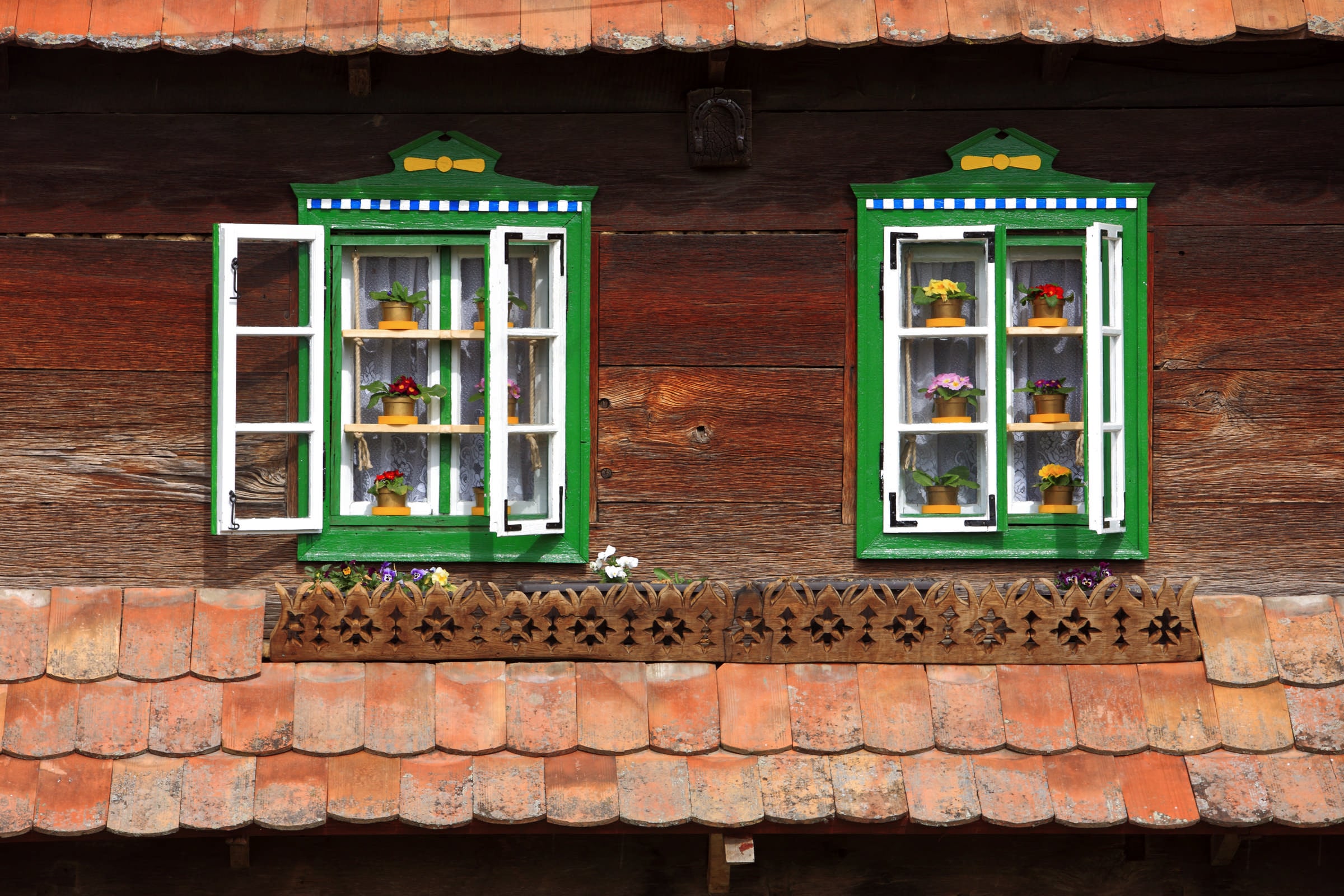 Lonjsko Polje Nature Park / Photo © Mario Romulic
Lonjsko Polje Nature Park / Photo © Mario Romulic
The programme takes place in April and lasts five days, six hours of work each.
Accommodation is provided free of charge in a dormitory in Krapje. The facility is equipped with a small kitchen and a bathroom, and has central heating. As volunteers will be sleeping on spare beds, they are required to bring their own sleeping bags. Groceries are provided free of charge, and bikes and vehicles are available to use for transportation within the Park.
5. Guardian of Plant Biodiversity in Brijuni National Park
There’s not much need for gardening on Brijuni islands - domestic wildlife and imported species such as mountain zebras and mouflons take care of landscaping by nibbling away at the grass at all times.
There’s a single item on the menu that the animals don’t like: a spiky flower called Spanish oyster thistle. Since the wildlife practically mows the lawn, it removes all natural obstacles that would prevent the spread of the Spanish oyster thistle, allowing it to take over whole areas that would otherwise be home to other plants.
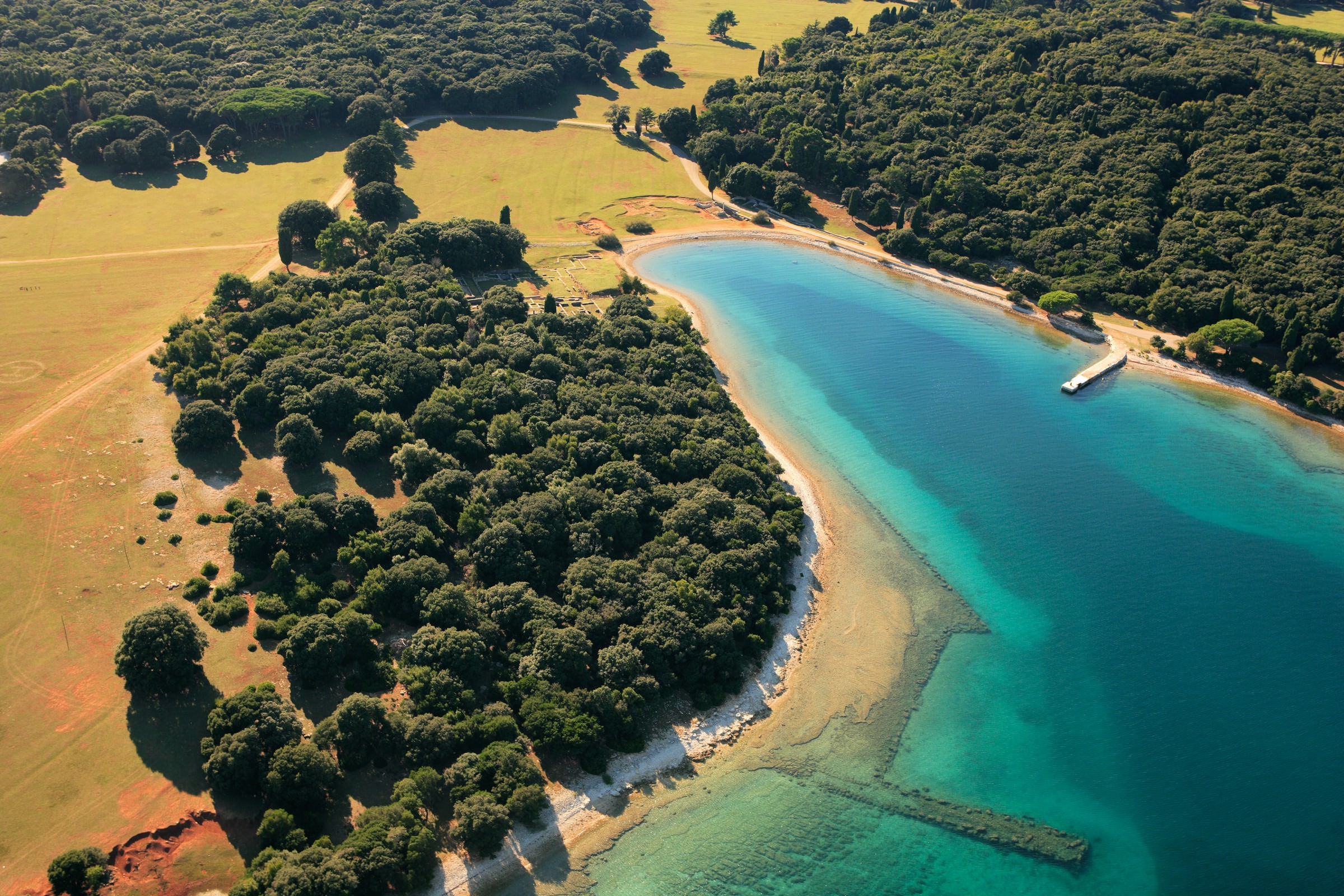 Brijuni islands / Photo © Mario Romulic
Brijuni islands / Photo © Mario Romulic
As a volunteer, you’ll help maintain the biodiversity on the meadows of Veliki Brijun island by keeping the pesky thistle in check. You’ll be removing the aggressive plant using provided gardening tools.
Volunteers are needed in the month of May and are required to put in 6 hours of work daily. Beyond that, the islands are yours to enjoy: explore the Safari and Ethno Parks, rent golf equipment and play on the golf course opened in 1922, or go for a swim at one of Brijuni’s pristine beaches.
The Brijuni are also a nice jumping off point for trips in Istria. Discover the ancient Roman monuments in Pula which is located only 7km away from Fažana, or visit the picture-perfect city of Rovinj.
 Wildlife on Brijuni islands / Photo © Mario Romulic
Wildlife on Brijuni islands / Photo © Mario Romulic
Accommodation is provided in one of the apartment buildings on Veliki Brijun island that are owned by the Park. Apartments are equipped with toilets, bathrooms, and a kitchen; rooms are shared with one or two other volunteers.
Groceries are provided free of charge and delivered to the apartment building, and one meal a day is also provided free of charge in the workers’ restaurant.
Volunteers have to arrange transport to Fažana town, and boat transportation to and from Veliki Brijun island is organised by the Park free of charge for the duration of the volunteer programme.
***
Applicants who don’t speak Croatian must be able to speak English in order to communicate with the park authorities and volunteer coordinators.
You can find more information about these and other volunteer programmes on the website Volunteer in Parks of Croatia.
Looking to apply? Fill out this form (in English), pick a programme you like and specify when you're free to participate, and the relevant programme coordinators will get back to you.
Please note that some of the programmes might not be accepting applications for the time being, or might be otherwise affected by epidemiological measures.
Check out our comprehensive Guide to the Nature and National Parks of Croatia.
Brijuni National Park Becomes Blue Park for Marine Conservation and Management
December 10, 2021 - The Institute for Marine Conservation has awarded Brijuni National Park the Blue Park gold award for achieving the highest science-based standards of marine conservation and management, joining Brijuni to a growing network of 21 Blue Park areas around the world designed to protect and regenerate ocean biodiversity.
The Institute of Marine Conservation designed the Blue Park Awards to encourage governments to protect the marine world, preserve critical habitats, promote resilience to climate change, and preserve the beauty of our oceans for future generations. The program's goal is to establish an effective network that protects and maintains the marine world and habitats globally. Today, there are 21 protected marine areas with Blue Park status granted, reports HRTurizam.
"It is a great honor to receive the Blue Park Award, which focuses on ZMPs [marine protected areas], recognizes their results “on land” and encourages even greater efficiency in conserving the ocean. This award is dedicated to our employees, communities, partners and stakeholders who enable positive change," said the Acting Director of the Brijuni National Park Marno Milotić.
Dr. Lance Morgan, president of the Marine Conservation Institute, said they are happy to see new areas marked Blue Park that will help speed up the protection of the most critical regions of our oceans. Brijuni National Park is a perfect example of an important and biologically diverse protection area, mainly because it contributes to resilience to climate change and protects several endangered species of turtles, marine mammals and important birds, added Morgan.
With a long tradition of a particular area for conserving biological diversity, Brijuni is an essential and significant area for the Community within the Natura 2000 network.
Brijuni's healthy ecosystems contain a rich marine world managed and supervised by numerous professional staff and their partners. Therefore, the strategy of sustainable financing of ZMPs is essential. As one of the few ZMPs financially independent, Brijuni raises significant funds to implement nature conservation measures from visitor fees, tourism activities, and visitor services.
"I am looking forward to sharing the story of this great new area with Blue Park status in cooperation with the managers who take care of Brijuni. I hope it becomes a model for other ZMPs around the world," said Dr. Sarah Hameed, senior scientist and director of the Blue Parks program.
Brijuni National Park protects essential seagrass ecosystems, including one of the most extensive Posidonia meadows on the West Coast of Istria, an endemic seaweed species. Seagrass meadows support a high level of diversity of the marine world by providing food, shelter and habitats for many species of fish and invertebrates.
Migratory species listed by the International Union for Conservation of Nature (IUCN) Red List, including loggerhead turtles, bottlenose dolphins and numerous birds, visit the area and use its rich resources. Seagrass meadows can prevent ocean acidification and sequester large amounts of carbon, thus contributing to resilience to climate change.
To read more about lifestyle in Croatia, follow TCN's dedicated page.
Dinosaur Fossils in Croatia and their Locations Declared Protected Part of Nature
April 21, 2021 – A total of 24 dinosaur fossils in Croatia have been declared a protected part of nature, making them the first protected fossil in Croatia.
As Glas Istre reports, the decision to declare dinosaurs and their locations as protected parts of nature were published in the Official Gazette on April 15 and comes into force eight days after its publication, on April 24.
With this proclamation, dinosaur fossils became the first protected fossil in Croatia, significant for their rarity, size, appearance, educational, and scientific significance. Each newly discovered dinosaur fossil and its location will be declared a protected part of nature under the Nature Protection Act.
Brijuni – the first location
The first find in Croatia's territory originates from Brijuni, dating from 1925 when A. Bachofen – Echt spotted traces of dinosaurs on Cape Ploče on Veliki Brijun. Another location in Croatia was also discovered on Veliki Brijun in 1965 on Cape Barban. Today, there is a Dinosaur Park available to the public and a sculpture of theropod dinosaur.
The third site is at Plješivac/Kamik, where fossils were discovered in 1987, and the fourth is at Trstike/Debela Glava, with a site from 2001.
More than 200 dinosaur footprints were found at four sites in Veliki Brijun, which inhabited the area of the future Brijuni Islands in the Mesozoic period. Within this broad period, the Brijuni dinosaur can be placed in the Cretaceous period (145 to 65 million years ago).
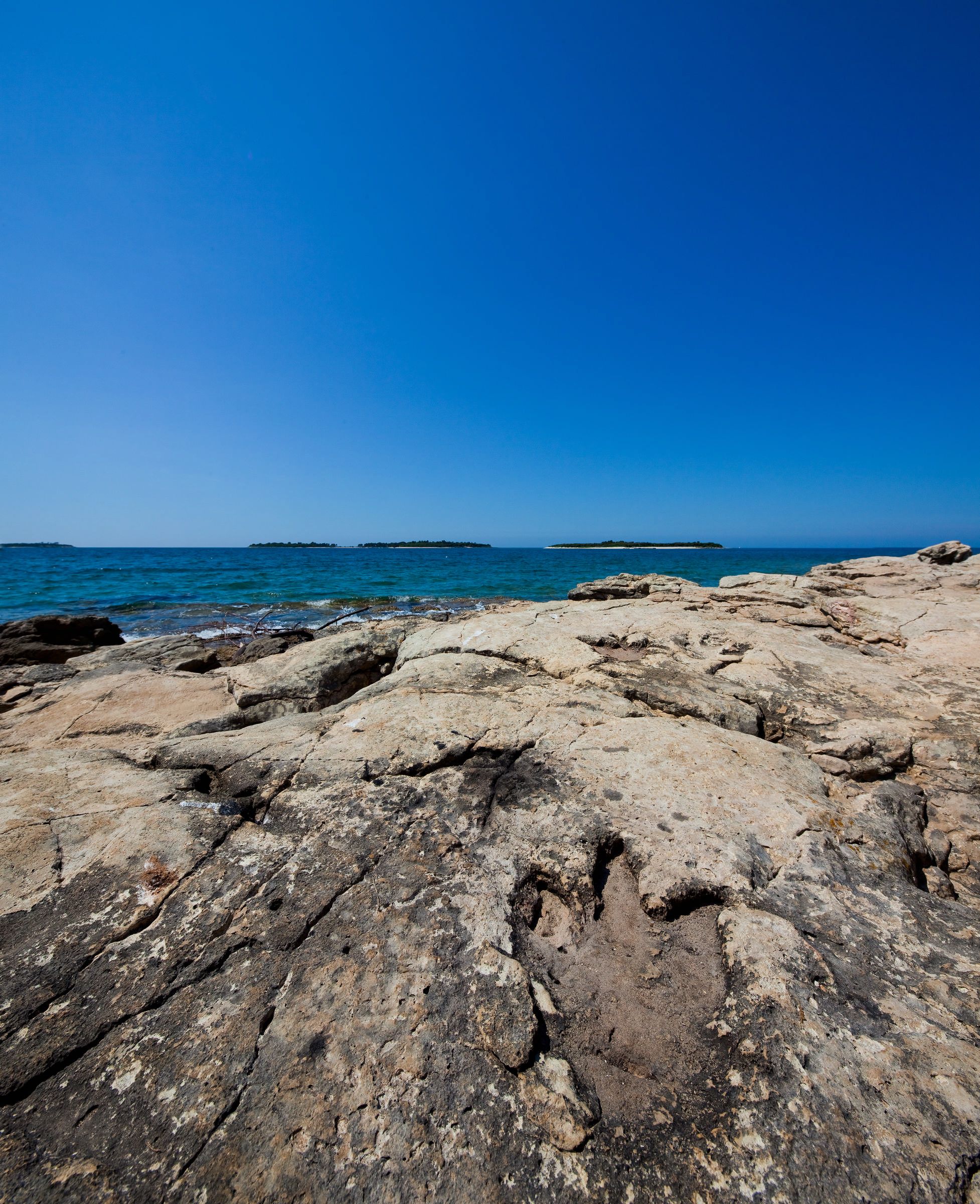
Dinosaur footprints on Brijuni / Copyright Romulić and Stojčić
Croatia's territory is part of the paleogeographic unit of the Adriatic-Dinaric carbonate platform. During the Jurassic and Cretaceous periods, sedimentation occurred on the carbonate platform, i.e., ecological conditions enabled the survival and development of dinosaurs.
Poor preservation
The dinosaur populations that inhabited these areas are specific in the morphology and dimensions of the fossil footprints and bones, which differ from the simultaneous findings from other parts of the world. Footprints suggest the presence of sauropod, theropod, and ornithopod dinosaurs.
Fossil footprints and bones have been preserved in Mesozoic limestone deposits. The oldest footprint finds date from the Upper Jurassic period and the youngest from the Upper Cretaceous. A total of 23 sites of dinosaur footprints have been discovered and investigated in Croatia, as well as one site with discovered petrified bones.
Finding dinosaur fossils in Croatia is possible, but the preservation of such finds is small. Therefore, all the findings found so far, but also possibly newly discovered dinosaur fossil finds, have a significant educational and scientific value. These remains are the only witnesses to dinosaurs' lives that can be used in the interpretation and education, and popularization of geo-heritage.
To read more news from Croatia, follow our dedicated page.
Legendary Formula 1 World Champion Jacques Villeneuve Visited Brijuni
April 6, 2021 – About 40,000 tourists vacationed in Croatia for the Easter holidays. Among them, the legendary Formula 1 world champion Jacques Villeneuve visited Brijuni National Park!
As the Brijuni National Park reported today, they had a special guest last weekend as the Canadian sports car driver, former world champion in Formula 1 Jacques Villeneuve stayed with his family in Istria for the Easter holidays.
Villeneuve and his family spent one day of their vacation in the Brijuni National Park, where they toured with expert guidance the natural and cultural-historical sights of the largest island of the Brijuni archipelago, Veliki Brijun.
Brijuni left a very positive impression on Villeneuve – the 1997 World Champion in Formula 1 with Williams Renault, winner of the 1995 Indianapolis 500, second in 24 Hours of Le Mans, namely the legend of motorsport.
As reported by the Brijuni National Park, Villeneuve was delighted with the many specialties of the archipelago. He especially liked the Boat House (Kuća za brodice) Education and Interpretation Center in the port of Brijuni. He also enjoyed the gastronomic delicacies of the Galija restaurant.
He praised the beauty of Istria, where he also visited the cities of Pula, Rovinj, and Motovun. Croatian Auto and Karting Association's president Davorin Štetner boasted on Facebook of dinner and wine with Jacques Villeneuve in Motovun, noting that such great world champions are thus promoting our country.
He also brought Villeneuve on the off-road track in the small Istrian settlement of Gambetići!
Villeneuve, who is currently driving for the NASCAR Whelen Euro Series, was supposed to come to Croatia back in November 2020 and drive the NASCAR GP on the Grobnik runway near Rijeka. However, although he didn't manage to visit Croatia last year due to his commitments in the Formula 1 race in Turkey, he enjoyed Croatia's tracks and beauty this year in Istria.
To read more news from Croatia, follow TCN's dedicated page.
Legendary Canadian Actor Christopher Plummer Dies Aged 91
February 6, 2021 – The legendary Canadian actor Christopher Plummer has died. In his most famous role, he played Zadar-born naval commander Georg von Trapp in 'The Sound Of Music'
The legendary Canadian actor Christopher Plummer has died aged 91. He passed away peacefully at home, surrounded by family and friends, following a fall. In a seven-decade-long career, he came to be regarded as one of the greatest actors in the world. In his most famous role, he played the Zadar-born naval commander Georg von Trapp in 'The Sound Of Music'.
Born on 13 December 1929 in Toronto, Christopher Plummer grew up in Senneville, Quebec. He initially established himself as an actor on the stage and although he famously moved into film acting, he frequently returned to the theatre and also acted for television.
Christopher Plummer was the oldest actor in the world to receive an Oscar. He received the Academy Award for Best Supporting Actor at the age of 82 for a role in the Mike Mills film 'Beginners' (2010), in which he played opposite Croatian Goran Višnjić. He became the oldest actor to receive a nomination for an Oscar, aged 88, for the film 'All the Money in the World'.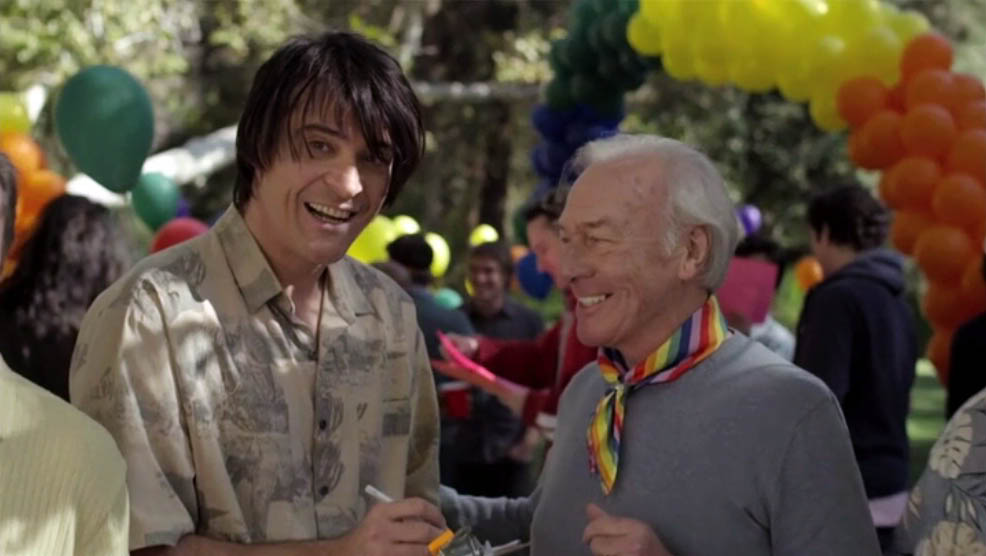 Goran Višnjić and Christopher Plummer in Mike Mills' 'Beginners' (2010). Christopher Plummer received an Academy Award for the role © Olympus Pictures
Goran Višnjić and Christopher Plummer in Mike Mills' 'Beginners' (2010). Christopher Plummer received an Academy Award for the role © Olympus Pictures
Christopher Plummer was one of a very small number of actors to have won an Academy Award, an Emmy Award and a Tony Award. In America, this achievement is known as the Triple Crown Of Acting. Christopher Plummer is the only Canadian actor to have achieved this. Among his many decorations, he earned an Academy Award, two Emmy Awards, two Tony Awards, a Golden Globe Award, a Screen Actors Guild Award, and a British Academy Film Award.
Christopher Plummer's life as a famous actor began when he was in his early 20s. In 1953, he took a major theatre role in French playwright André Roussin's 'Nina'. He debuted both on Broadway and on television in the same year, the latter within a production of 'Othello'. He continued to be cast for roles in Shakespeare plays throughout the 1950s and subsequent decades. He earned his second Emmy nomination in 1964 for 'Hamlet'.
In 1958, Christopher Plummer's film career began when he played a young writer in Sidney Lumet's 'Stage Struck'. He played the Roman emperor Commodus in Anthony Mann's epic 'The Fall of the Roman Empire (1964). One year later, he appeared in a role that would make him famous forever all over the world.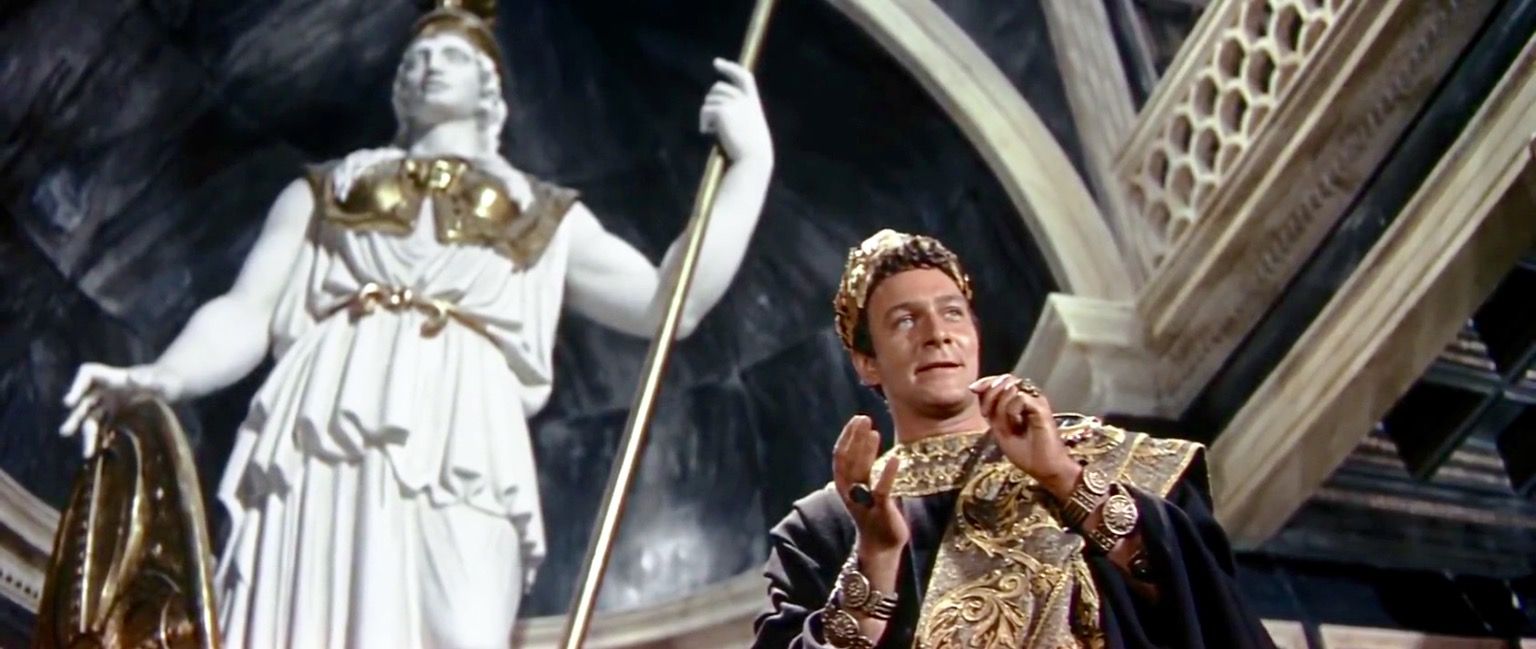 Christopher Plummer in the Roman epic 'The Fall of the Roman Empire (1964) © Paramount Pictures
Christopher Plummer in the Roman epic 'The Fall of the Roman Empire (1964) © Paramount Pictures
Although he later had misgivings about the role, Christopher Plummer's depiction of Zadar-born, Rijeka-trained Naval commander Georg von Trapp in 'The Sound Of Music' (1966) ensured he would be recognised globally for his talent. The film received five Academy Awards and was so popular that many returned to the cinema time and again to watch it. It became the highest-grossing film of all time, eclipsing 'Gone With The Wind' which had held the title for 25 years!
Having conquered Broadway, he set his sights instead on European theatre and moved to London in the mid-1960s. He enjoyed simultaneously a successful stage and film career, appearing in several famous movies about the Second World War and was consistently hired for theatre roles by some of the leading directors of the day, including Laurence Olivier, Jonathan Miller, and Neil Simon.
In the 1970s the list of Christopher Plummer's blockbuster appearances included 'Waterloo' (1970), as the Duke of Wellington, 'The Man Who Would Be King' (1975), as Rudyard Kipling and 'The Return of the Pink Panther (1975). In 1975, he appeared as Archduke Franz Ferdinand in the movie 'The Day That Shook the World', directed by Croatian-Montenegrin filmmaker Veljko Bulajić.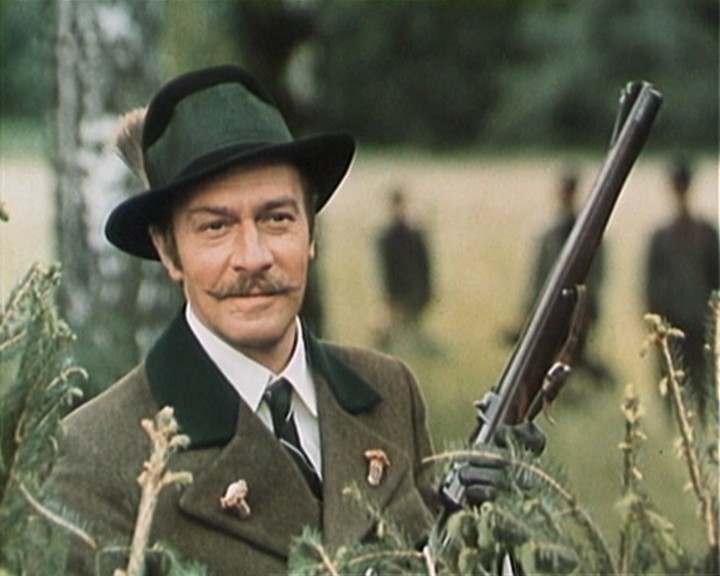 Christopher Plummer as Archduke Franz Ferdinand in the movie 'The Day That Shook the World', directed by Croatian-Montenegrin filmmaker Veljko Bulajić © American International Pictures
Christopher Plummer as Archduke Franz Ferdinand in the movie 'The Day That Shook the World', directed by Croatian-Montenegrin filmmaker Veljko Bulajić © American International Pictures
In 1977, Christopher Plummer starred in the then-monumental television miniseries 'Jesus of Nazareth', playing King Herod alongside Laurence Olivier, James Earl Jones, Robert Powell, Anne Bancroft, Anthony Quinn, Rod Steiger, Peter Ustinov, and James Mason. He repeated his television success in 1983, taking a lead role in the five-time Emmy Award-winning series 'The Thorn Birds.'
Christopher Plummer was one of the rare actors whose fame and abilities never dwindled. He only ever seemed to get better and more popular. He remained in-demand as a film actor until his death, with a neverending list of successful film endeavours from the last three deacdes including 'Star Trek VI: The Undiscovered Country' (1991), Spike Lee's 'Malcolm X' (1992), Stephen King's 'Dolores Claiborne' (1995), Terry Gilliam's '12 Monkeys' (1995), Michael Mann's 'The Insider' (1999), Nuremberg (2000), Ron Howard's 'A Beautiful Mind' (2001), Oliver Stone's 'Alexander (2004), Terrence Malick's 'The New World' (2005), Spike Lee's 'Inside Man' (2006), the Disney/Pixar classic 'Up' (2009), 'The Last Station' (2009) playing Leo Tolstoy, 'The Girl with the Dragon Tattoo' (2011), 'Beginners' (2011), Nazi/Holocaust thriller 'Remember' (2015), Ridley Scott's 'All the Money in the World' (2017) as John Paul Getty and in the universally acclaimed, Agatha Christie-inspired 'Knives Out' (2019).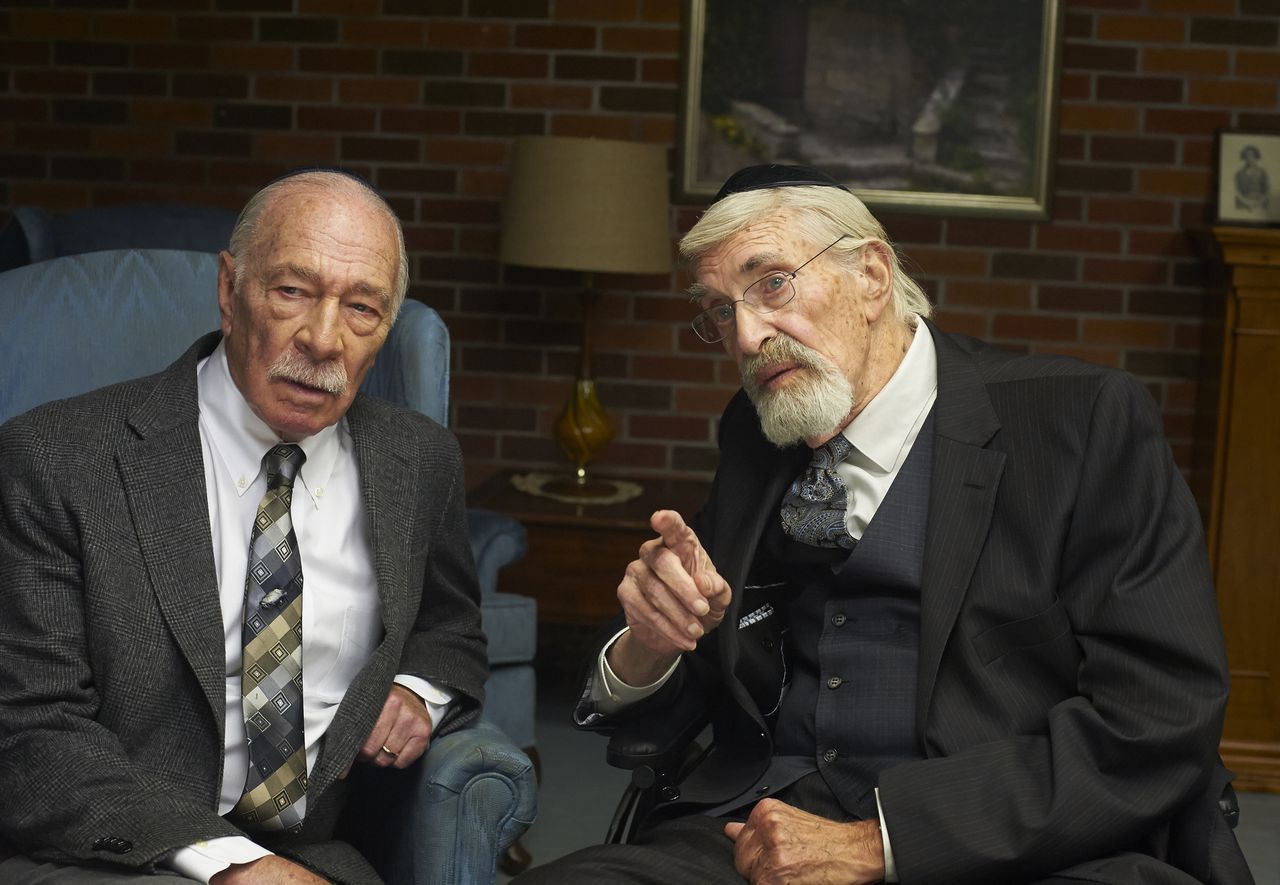 Christopher Plummer (left) and Martin Landau as Auschwitz survivors in Atom Egoyan’s Nazi/Holocaust thriller 'Remember' (2015) © eOne
Christopher Plummer (left) and Martin Landau as Auschwitz survivors in Atom Egoyan’s Nazi/Holocaust thriller 'Remember' (2015) © eOne
Christopher Plummer married three times but had only one child, a daughter, the actress Amanda Plummer. She is a Tony winner, like her father, is famous for her role in Quentin Tarantino's 'Pulp Fiction' and is a frequent visitor to Croatia – she is friends with Rade Šerbedžija and his wife Lenka Udovički and appeared in the filmed workshop, 'Core Sample - Goli Otok' with Vanessa Redgrave and Lynn Redgrave at Šerbedžija and Udovički's open-air theatre in the Brijuni islands.
Following the announcement of his death, Christopher Plummer's 'The Sound of Music' co-star Julie Andrews paid tribute to him, stating "The world has lost a consummate actor today and I have lost a cherished friend. I treasure the memories of our work together and all the humor and fun we shared through the years."
The world of theatre and film were united in their praise and mourning for the star, with other tributes coming from Ana de Armas, Jamie Lee Curtis, Russell Crowe, Katherine Langford, Rian Johnson, Chris Evans, Don Johnson (who worked with him on Knives Out), Elijah Wood, Vera Farmiga, Ed Asner as well as his longtime friend and former Shakesperian understudy William Shatner.
Lou Pitt, Christopher Plummer's longtime friend and manager of 46 years, said; “Chris was an extraordinary man who deeply loved and respected his profession with great old fashion manners, self-deprecating humor and the music of words. He was a national treasure who deeply relished his Canadian roots. Through his art and humanity, he touched all of our hearts and his legendary life will endure for all generations to come. He will be with us forever. ”
PHOTOS: Now is the Time to Visit the Brijuni Islands
Saturday 11 September 2020 - With a trip to one of Croatia's most spectacular National Parks coming at half price in September, now is the time to visit the Brijuni islands!
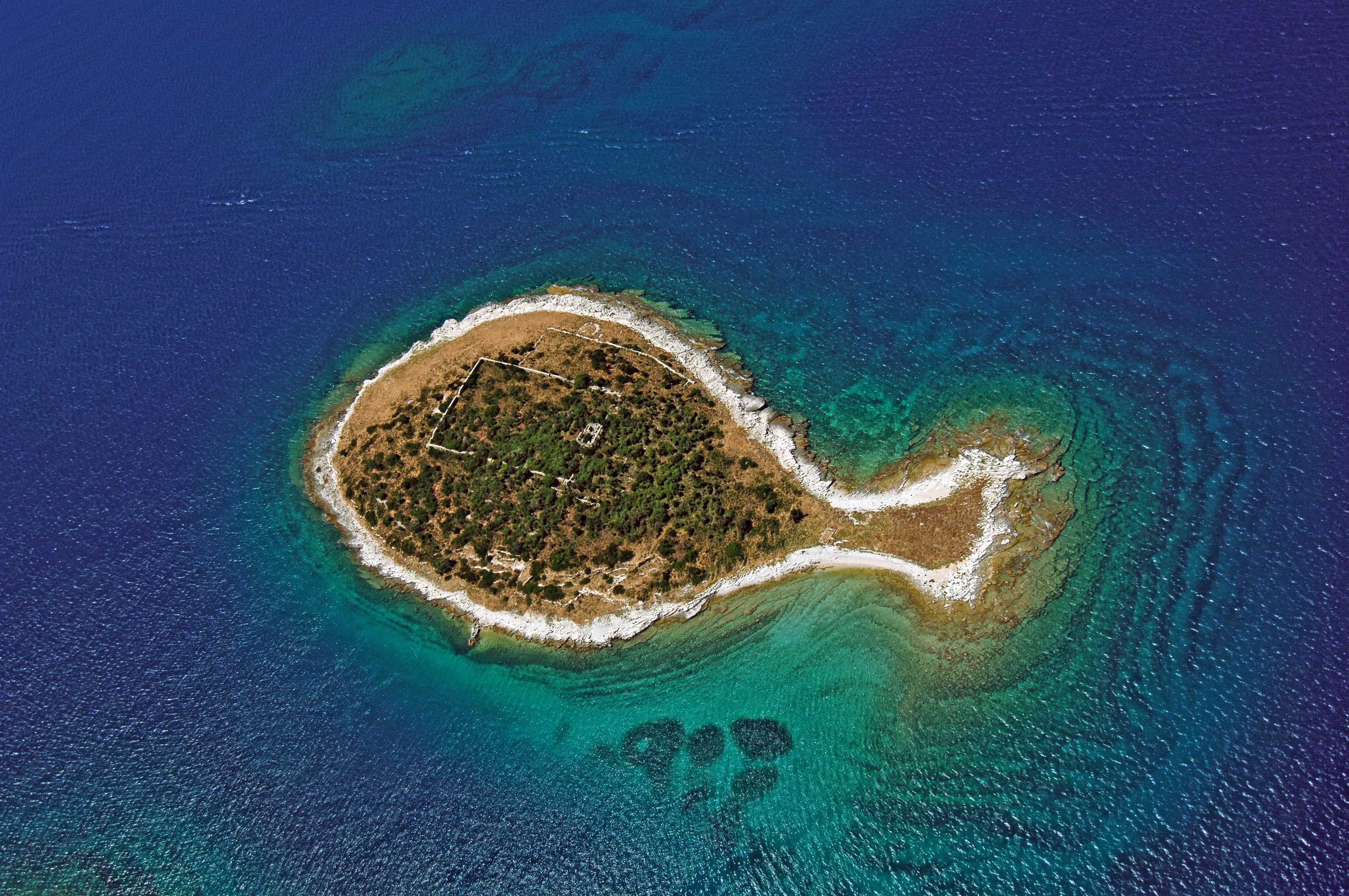
A remarkable fish-shaped islet, part of the Brijuni islands © Croatian National Tourist Board
For a long time, beautiful Brijuni wasn't for the likes of you or me. Visit the Brijuni islands? I think not. The picturesque and peaceful collection of islands and islets were reserved for the select few. Once an exclusive beach resort catering only to the richest in Austro-Hungarian society, then the private summer residence of Tito, its stunning scenery and wonderful wildlife were off limits to most for close to 100 years.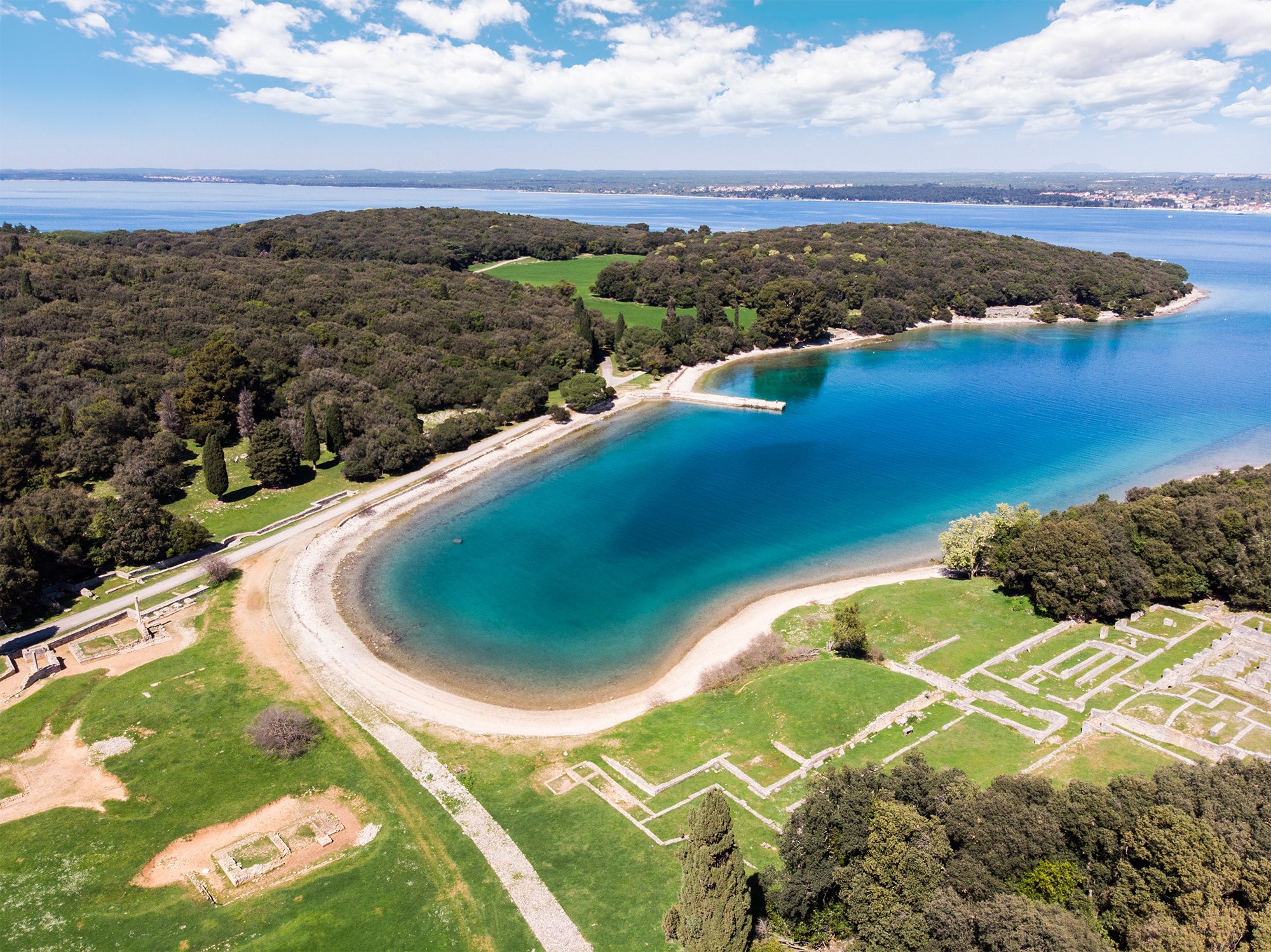
© np-brijuni.hr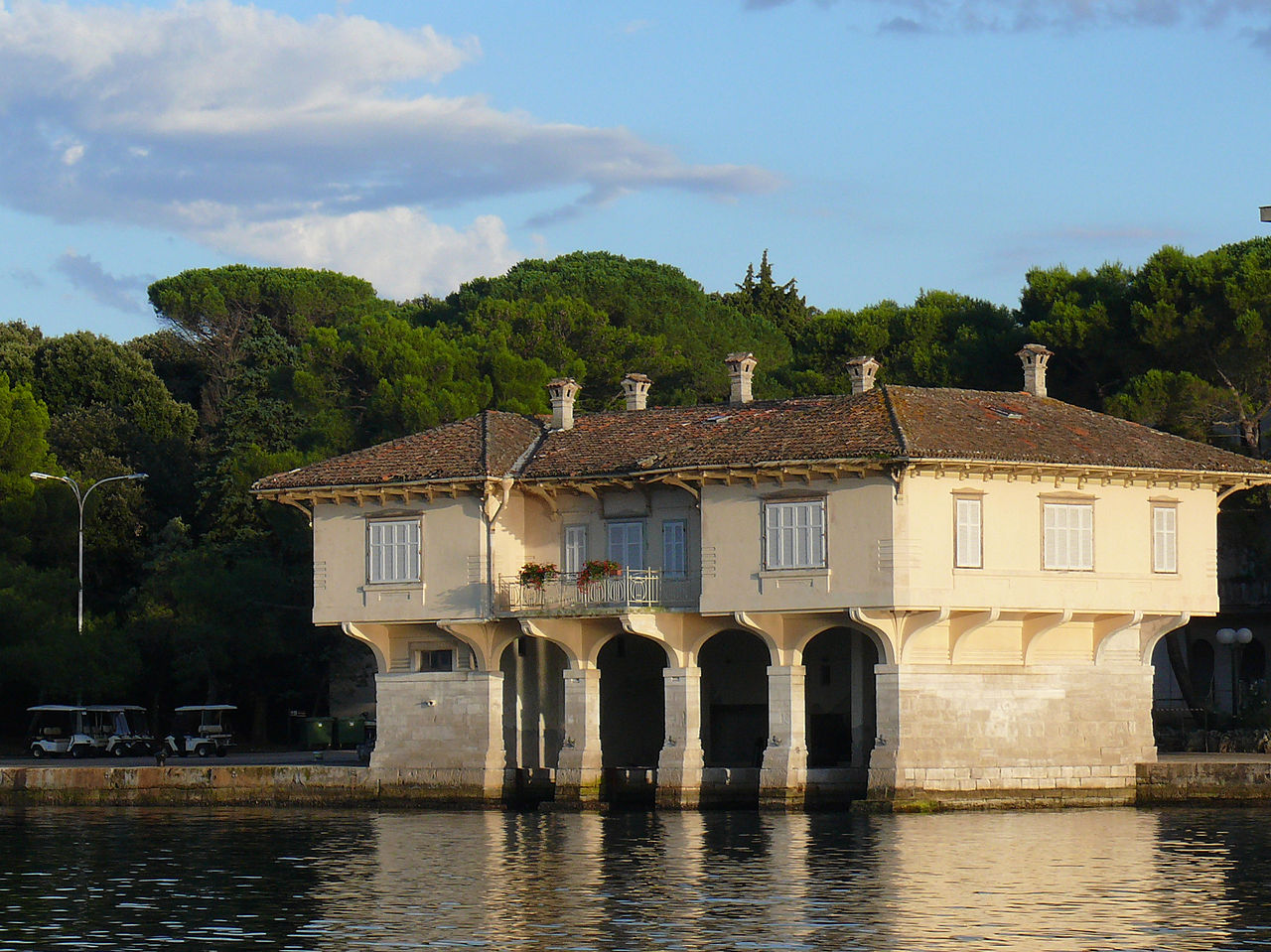
© Johann SUHM
These days, the Brijuni islands is a lot more accessible, although it maintains its exclusivity with a high cost of visiting independently by boat. However, the National Park runs daily boat services Fažana, just north of Pula. And with this all-inclusive boat trip coming at half price this September, there's never been a better time to visit the Brijuni islands.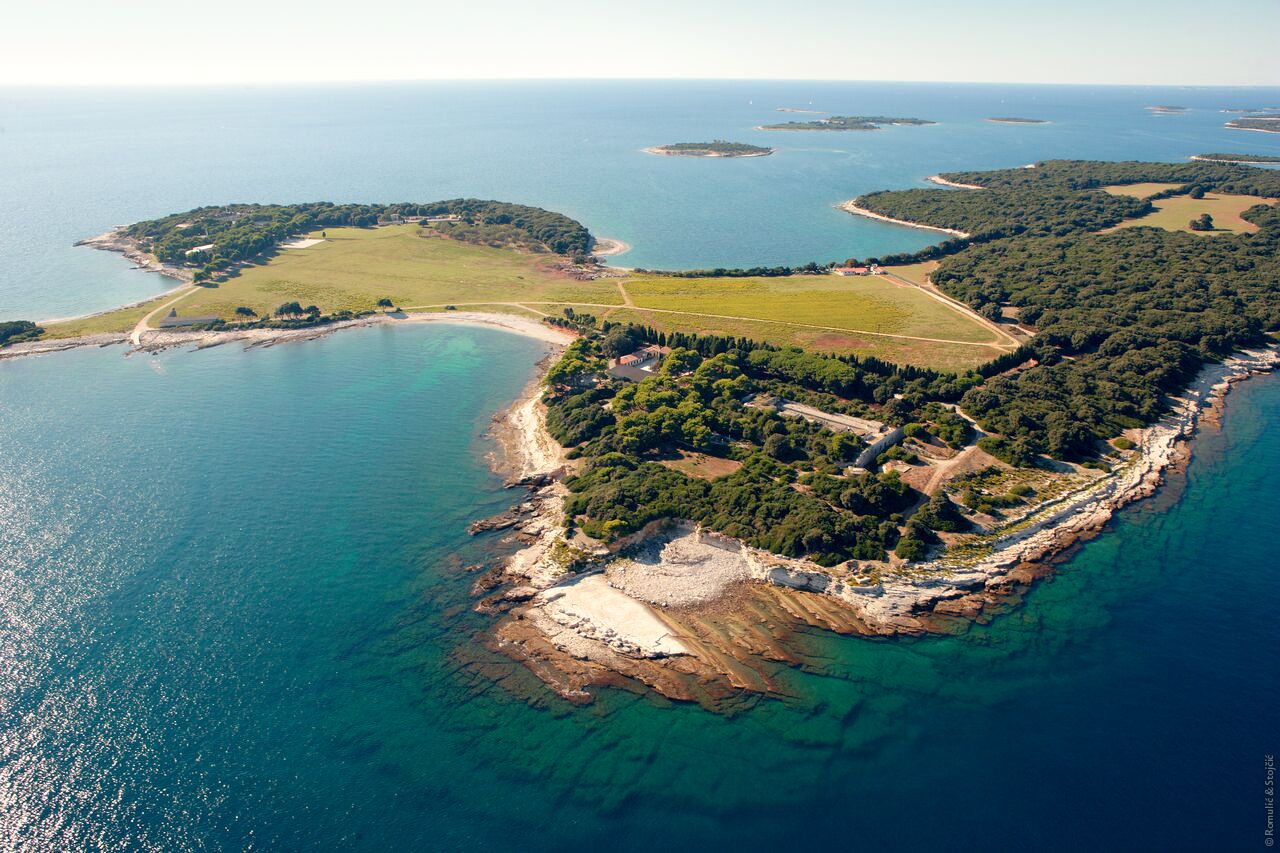
© Romulić & Stojčić
© Romulić & Stojčić
During this month, a trip to visit the Brijuni islands comes at th promotional price of 115 kuna for adults and 57.50 kuna for children (aged four to 14). The ticket price includes the return boat trip from Fažana, an expert guide, a tour of the island by tourist train, viewing the Natural History Collection, current photo exhibition 'Tito on Brijuni' and more.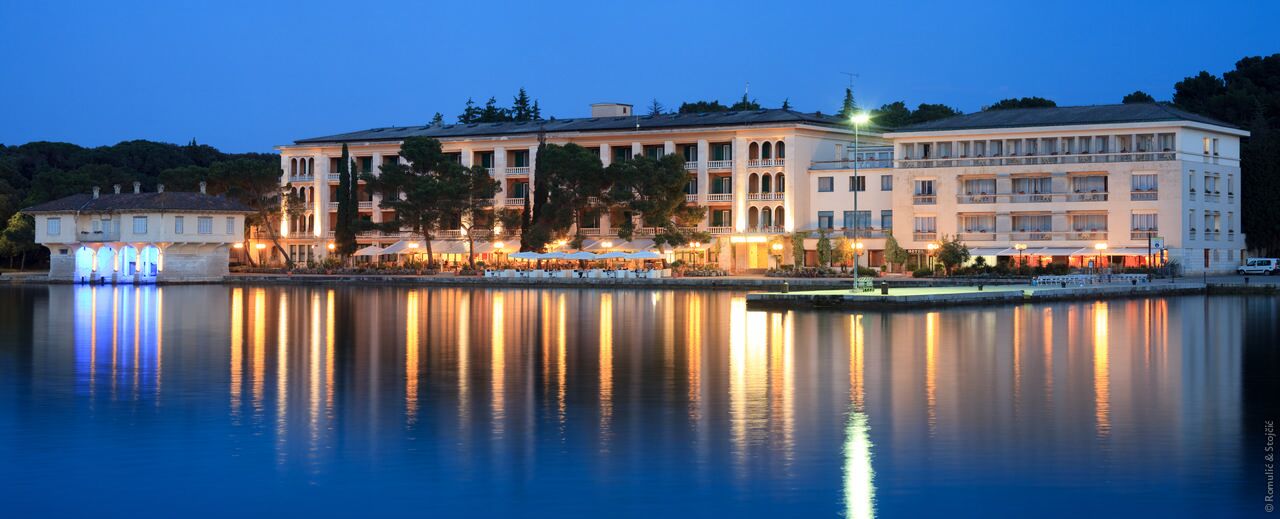
© Romulić & Stojčić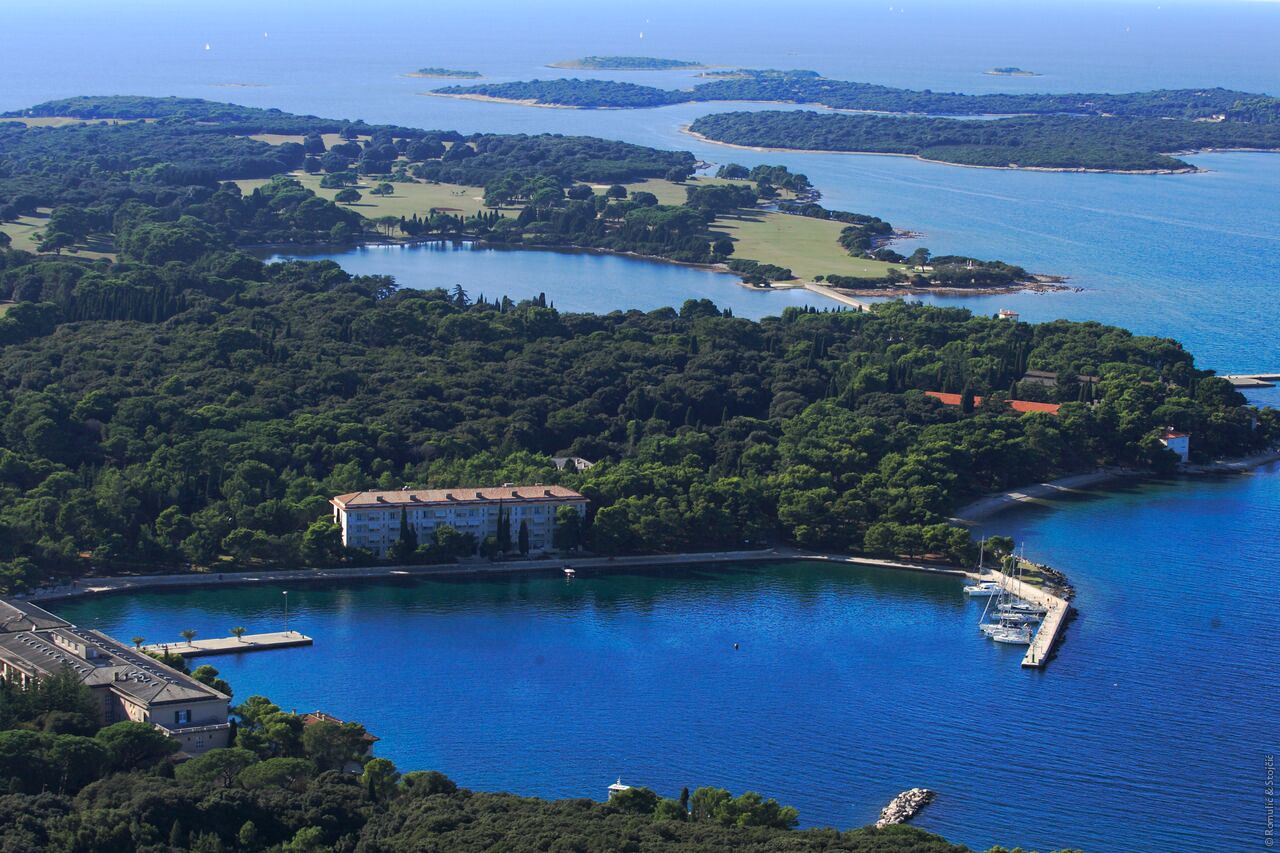
© Romulić & Stojčić
You can wander through the Brijuni Mediterranean garden or marvel at copies of frescoes and Glagolitic scripts at the exhibition in the 15th-century church of St. German. Or, you can just peel off and do your own thing.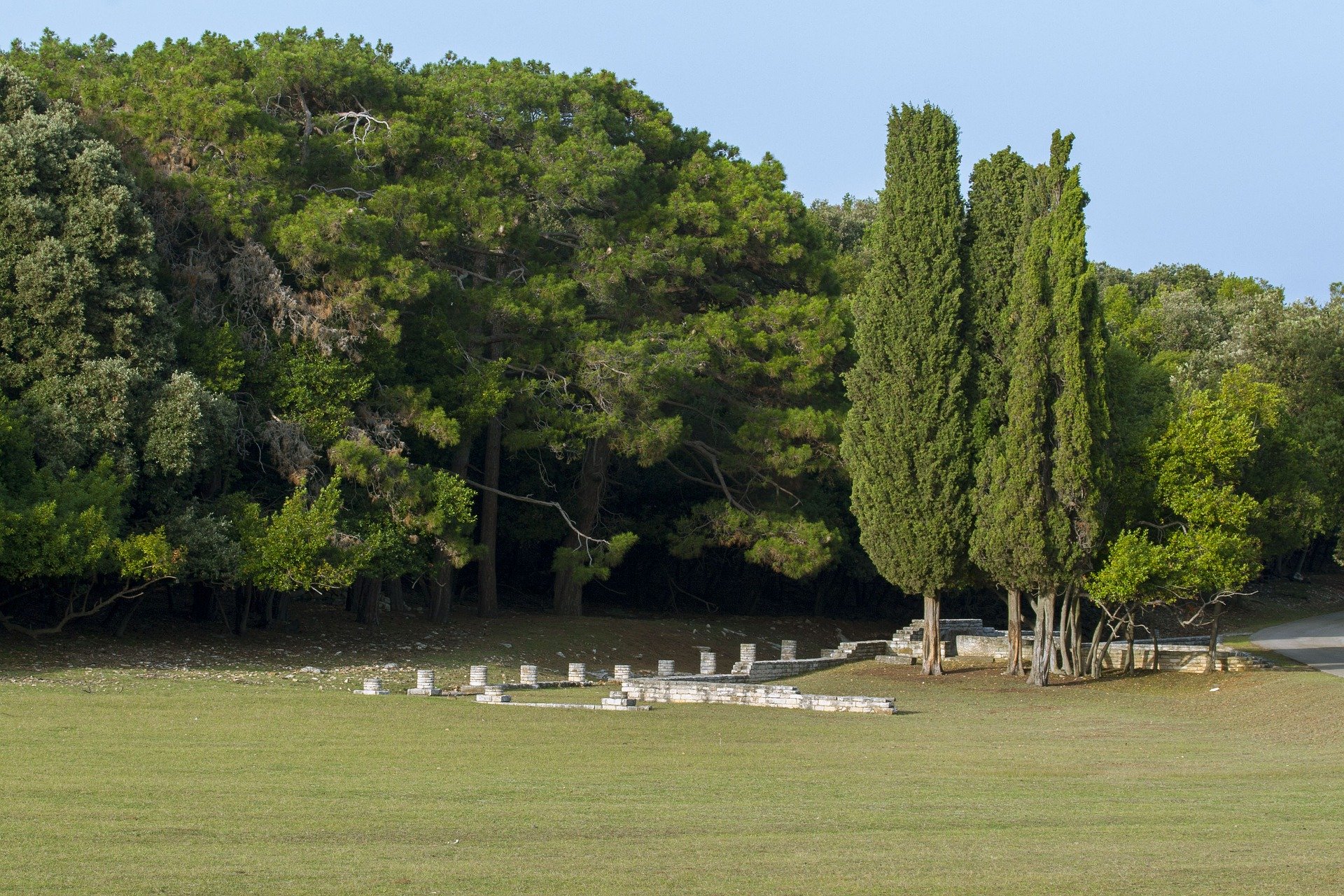
© Neven Prasnikar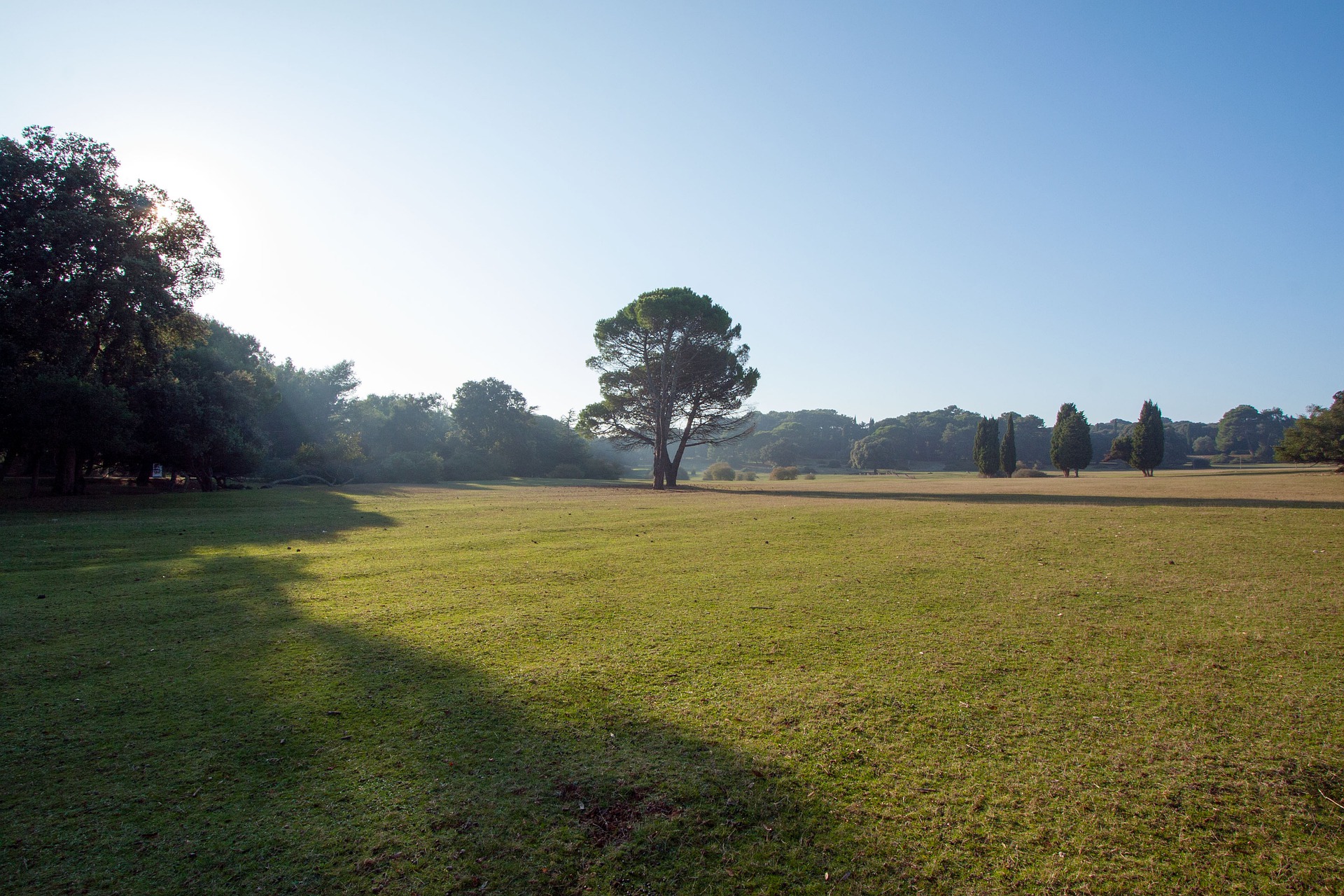
© Neven Prasnikar
The discount visit the Brijuni islands is available every day throughout September with departures of the ship from Fažana taking place at 10am, 11.30am and 1.30pm.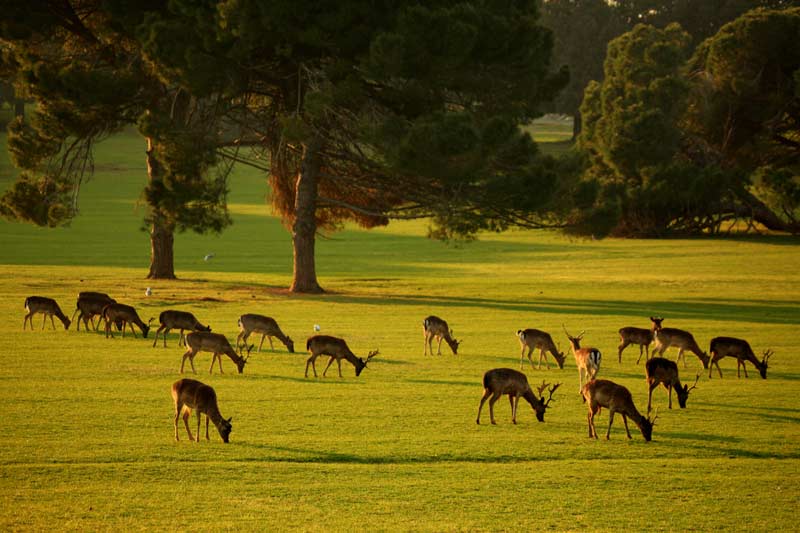
The islands are famous for their nature. As well as larger residents, there are almost 700 plant species and about 250 bird species on the islands © np-brijuni.hr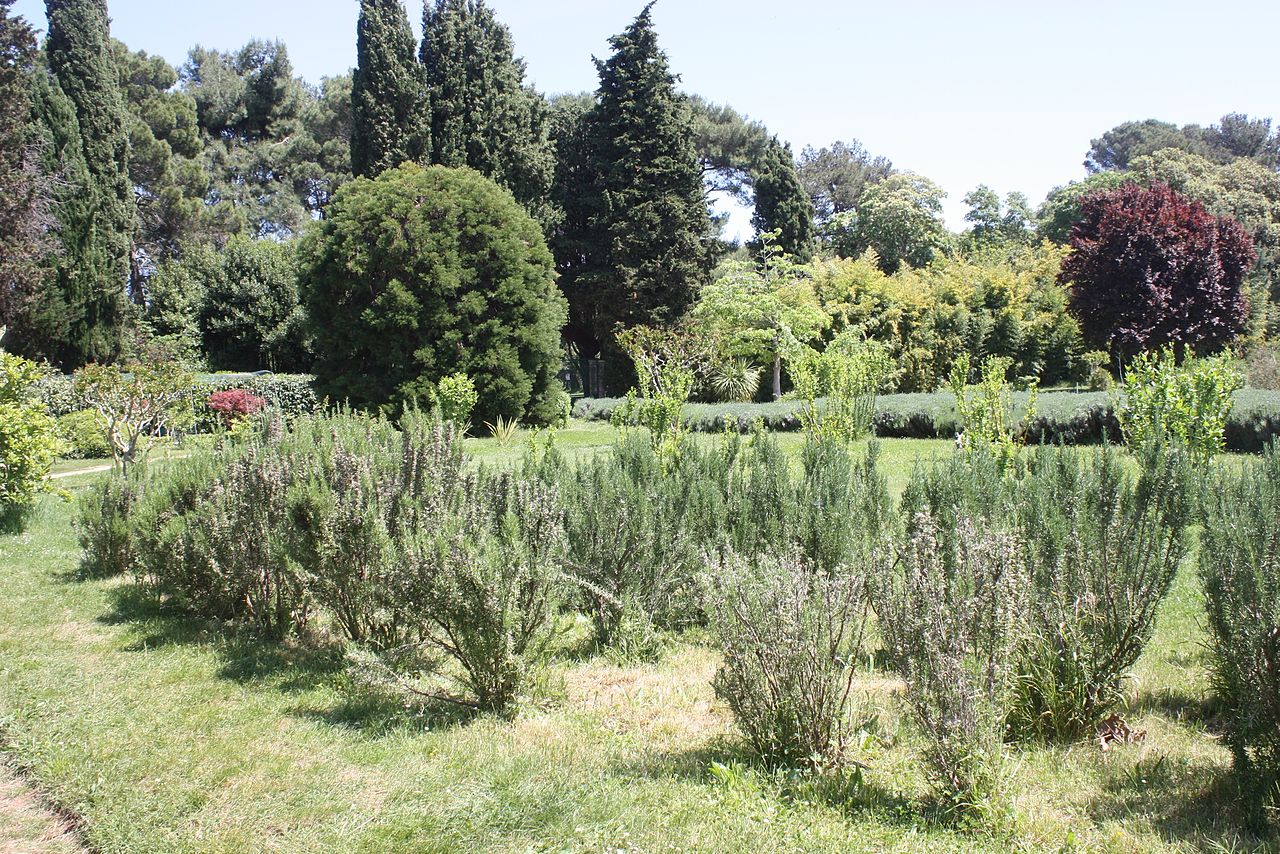
© Dguendel
Look out for special weekend activities also planned for this month and which will be part of any boat visit - on September 19th and 20th, you and the family can meet the elephant Lanka. On September 26th and 27th, a detailed guided tour of the Brijuni Mediterranean Garden will take place when you can learn about the secret life of plants and insects.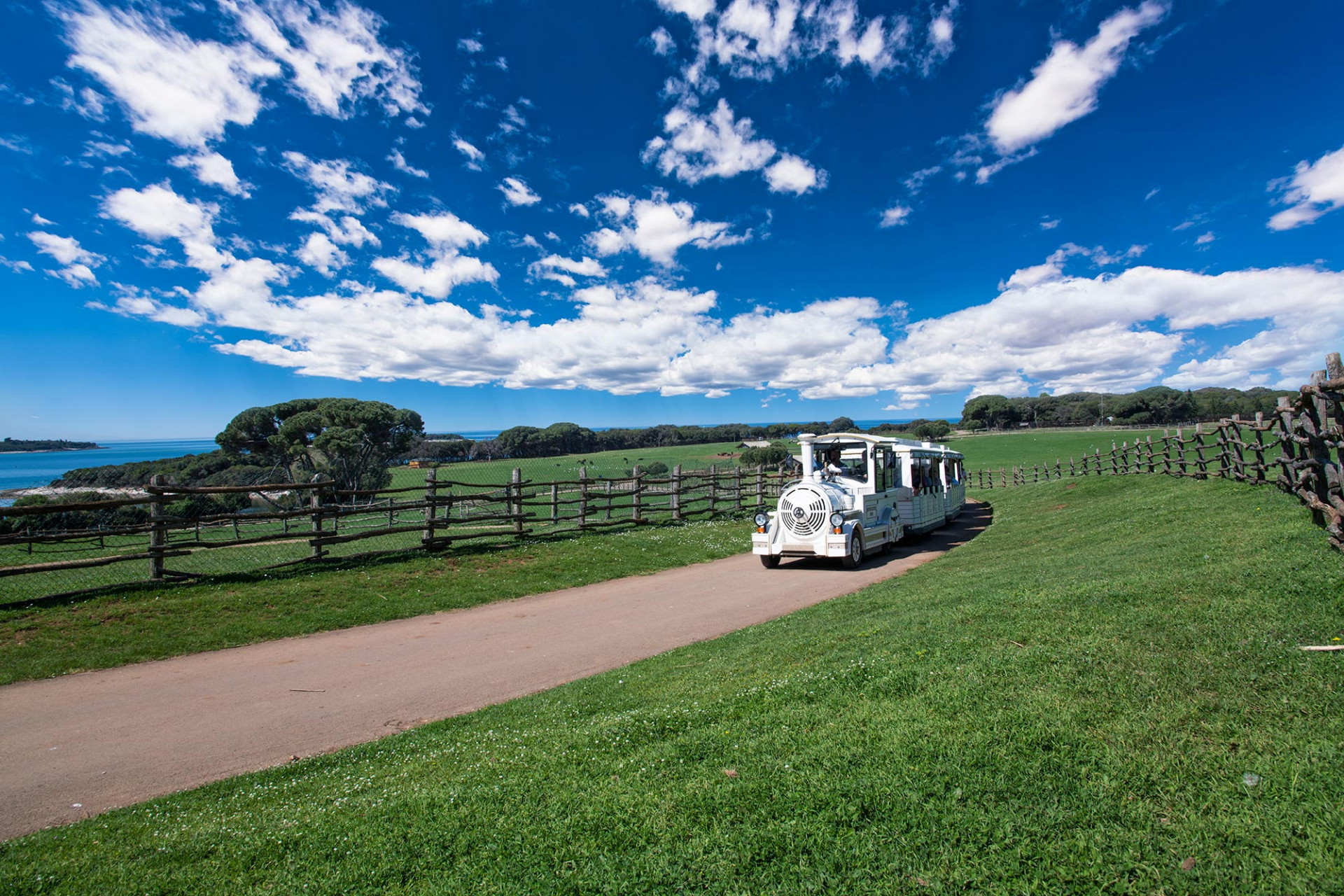
A tourist train takes visitors around the island's safari park © np-brijuni.hr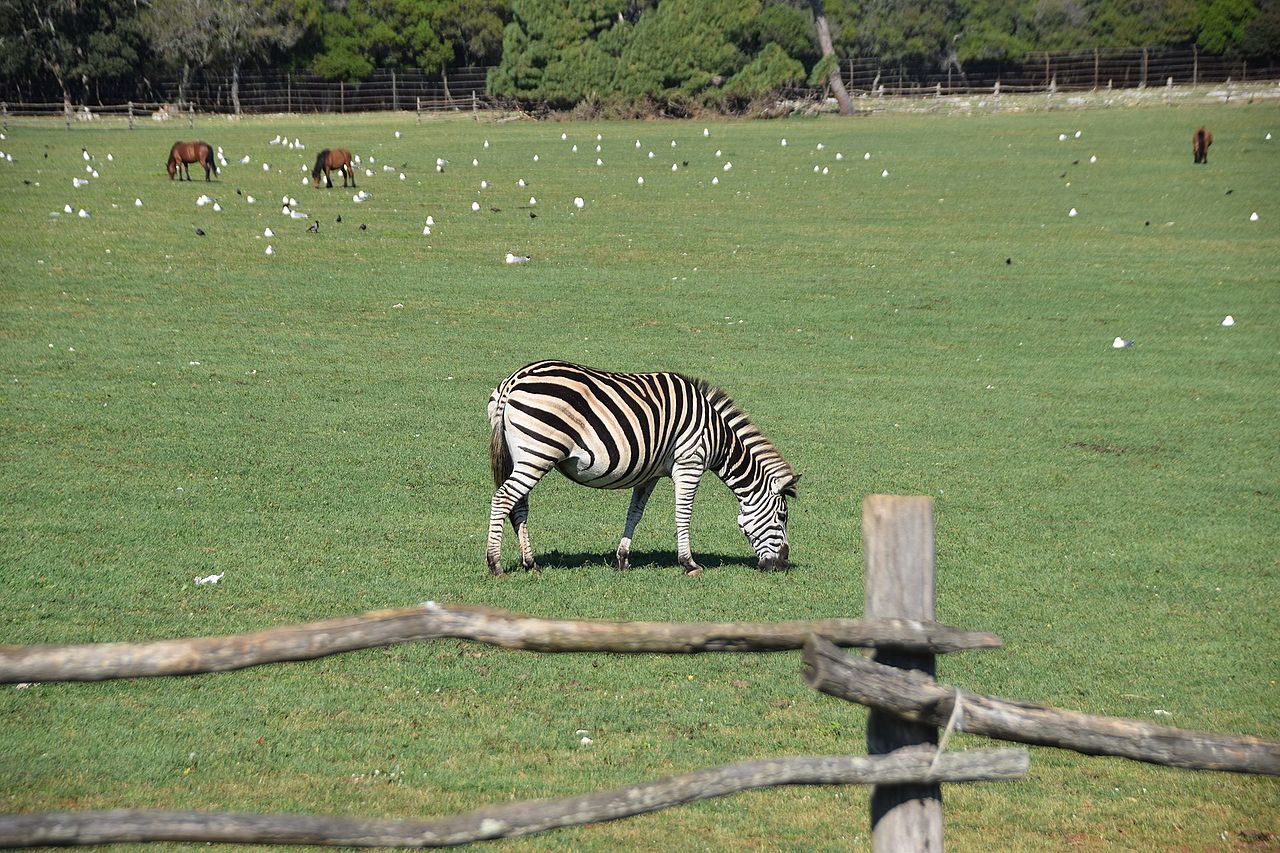
© Logica olgica
Due to the epidemiological situation, masks are mandatory in all indoor areas of the National Park. Although for any outdoor activities on this visit the Brijuni islands, they are not insisted upon.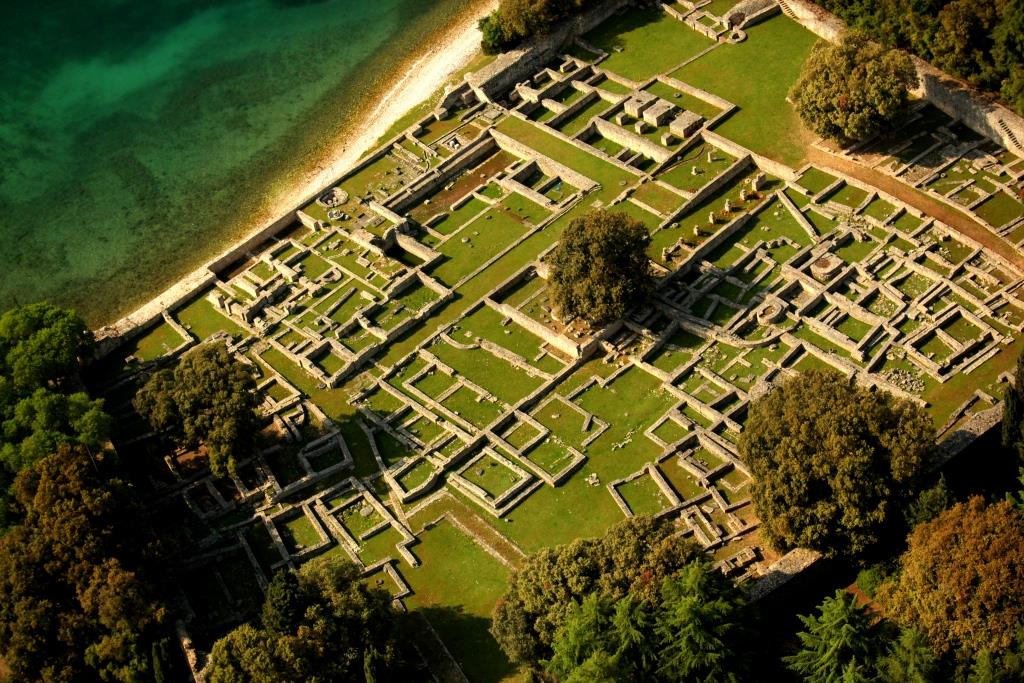
© np-brijuni.hr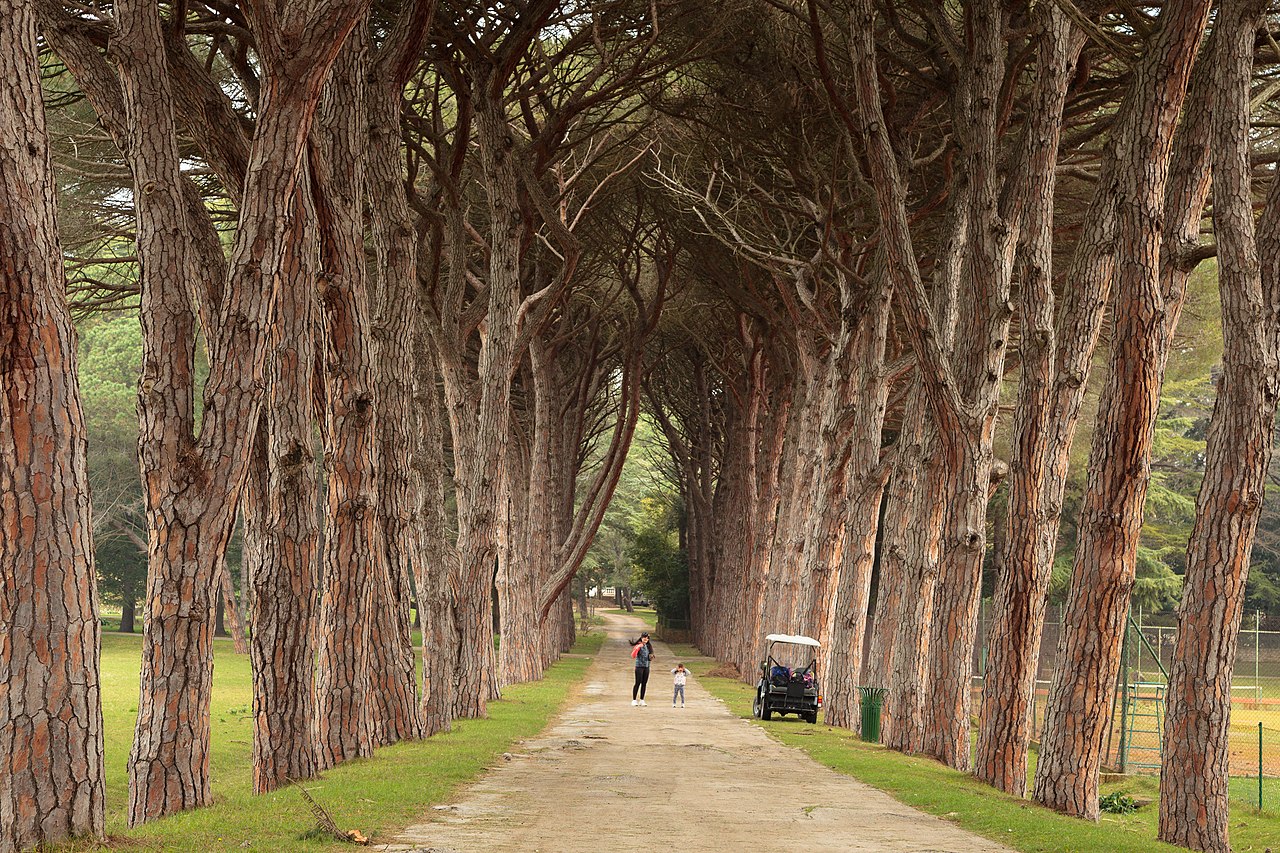
© David Lukšić
For the latest travel info, bookmark our main travel info article, which is updated daily.
Read the Croatian Travel Update in your language - now available in 24 languages
Mali Brijun: Abandoned Buildings Being Renovated for 41.7 Million Kuna
As Barbara Ban/Novac writes on the 17th of February, 2020, the public tender for the selection of the construction works company to be held in Mali Brijun is underway until February the 21st, 2020, and it concerns the renovation of seven ground-floor structures. These are currently abandoned buildings that will be renovated for education and research as part of the EU's New Brijuni Project.
According to the Brijuni National Park public institution, in the bay of Sv. Mikula, where the former military dormitories used to be, there will be a new complex, the purpose of which will be primarily educational and for research purposes. The newly renovated one-storey buildings will be intended for the accommodation of pre-school, school and university groups, non-governmental organisations, artists, scientists, as well as for all those who wish to carry out educational programmes on the island of Mali Brijun, such as nature schools and cultural programmes etc.
The four buildings will be converted into dormitories that will have a total of eighteen hostel-type rooms with eighty beds with bunk beds, ranging in size from one hundred to 180 square metres, with shared or separate bathrooms. Part of one of these buildings will be an information (info) point, while the rest will house a kitchen with a restaurant with about fifty seats, a storage room and a janitor's space. In addition to the new recruitments that will follow the reconstruction, the said activity will contribute to a significant expansion of the Brijuni National Park's offer for excursion tourism as Mali Brijun is currently closed to visitors, except for certain announced groups.
"The planned value of the works and equipment in Mali Brijun comes to a total of 8.5 million kuna, and it is divided into two procurement procedures. The ongoing tender includes construction works, that is, the reconstruction of facilities, worth 7.3 million kuna, followed by a tender for the equipping and the interior design of dormitories and hospitality facilities and an accompanying kitchen, for which 1.2 million kuna are set aside and foreseen. We expect all of the works to be completed in 2021,'' said Masha Mihelic.
The key infrastructure prerequisite for the beginning of reconstruction of these facilities on beautiful Mali Brijun was the renovation/rehabilitation of the old access pier for cargo vessels, which collapsed due to severe storms, which prevented the preparation and implementation of this significant project activity. Work on the reconstruction of that Austro-Hungarian pier is underway and should be completed by late spring.
The island's revitalisation is part of the activities of the New Brijuni Project co-financed under the "Competitiveness and Cohesion 2014-2020" operational programme from the European Regional Development Fund and the Environmental and Energy Efficiency Fund. "Novo ruho Brijuna'' is one of the projects involving national parks and nature parks that has been successfully submitted to the competition of the Ministry of Regional Development and EU Funds, and "Promoting the sustainable use of natural heritage in national parks and nature parks" and has been being actively implemented since back in October 2017.
The total value of the project is set at a maximum of 41.7 million kuna. The total eligible costs of the project are 32.1 million kuna, of which 27.2 million kuna has been awarded from the European Regional Development Fund, ie 85 percent of the total eligible costs. The remaining eligible costs were co-financed with funds from the Environmental Protection and Energy Efficiency Fund in the amount of 3.2 million kuna, while the funds in the amount of 1.6 million kuna were co-financed by Brijuni National Park's public institution.
In order to increase the mobility and availability of new facilities on the island of Mali Brijun, a new passenger ship with a capacity for 150 passengers is under construction at Tehnomont Shipyard Pula, whose handover and launch is expected in mid-2021. With more frequent shipping to the islands, the new shallow-draft catamaran that will be able to dock at Mali Brijun will enable the realisation of a completely new offer for visitors.
This is also in line with the aforementioned project, the overall aim of which is to improve the management of Brijuni National Park with the principles of the sustainable use of natural heritage with the aim of socio-economic development of the local community through the development of visitor infrastructure and attractive tourist facilities, thus raising the level of visitors' knowledge about the importance of natural heritage. Additionally, with the aim of presenting the geotourism potential of Mali Brijun, equipment for a tour of the educational footpath called Brijuni Stone Stories will also be purchased.
The other most significant, already realised, activity of the entire project for Brijuni is the procurement and establishment of a new info point in Veliki Brijun with an interactive screen presenting all of Brijuni's attractions and the procurement of two homologated tourist trains that allow sightseeing of the island for people in wheelchairs.
The New Brijuni Project includes various promotional and marketing activities, such as market research and analysis, branding strategy, media advertising, the production of promotional videos, brochures, leaflets, multilingual guides etc.
World's Biggest Welcome in Croatia: Day 3 - Brijuni to Pazin (Kayak, Bike, Speleo)
March 30, 2019 - Putting Croatian adventure tourism on the map, with the biggest welcome in the world. Day 3 of this incredible 2011 adrenaline trip covering 2,500 km along the Croatian coast.
The World's Biggest Welcome, an ambitious adventure tourism project in 2011 in Croatia enters Day 3 of this 2019 appreciation of one of the finest tourism promotion projects ever in Croatia.
The plan? To showcase the diversity and fabulous offer of adventure tourism in Croatia by following a GPS route the length of the Croatian coast in the shape of the word 'Welcome' - thereby creating the biggest welcome in the world from a hospitable tourism country.
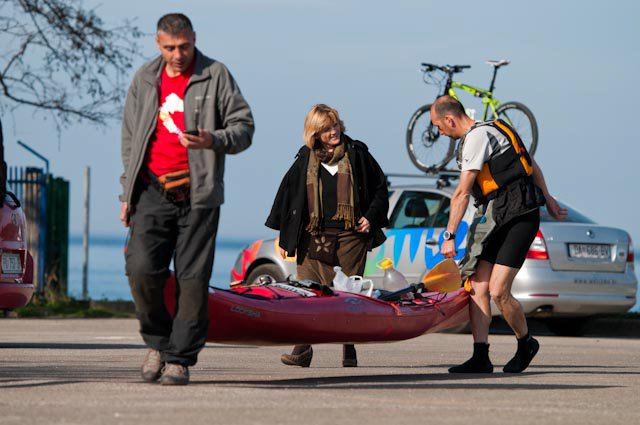
Having started on the Slovenian border in Savudrija, Daniel Lacko spent the first two days kayaking 80 km along the Istrian coastline to Brijuni. Another early start on Day 3.
In order to work on forming the first letter 'W', Lacko headed north and inland, combining his kayaking with cycling and speleo-alpinism.
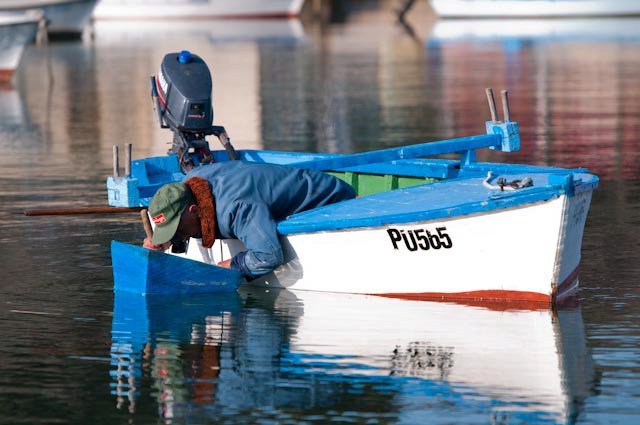
He was not the only man up early that morning. The timeless Adriatic.
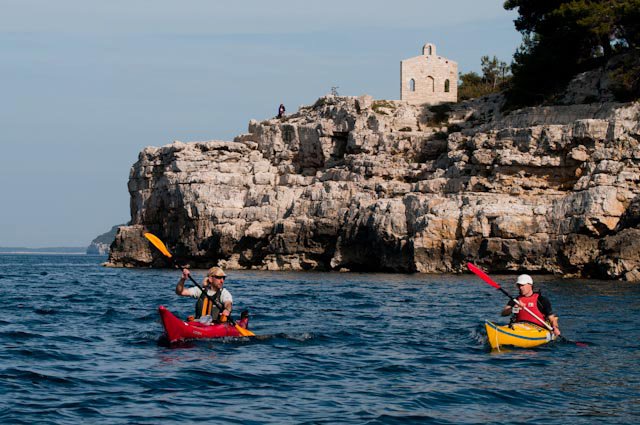
The first part of a busy day was a 25 km kayak paddle from Brijuni to Pula, passing Verudela.
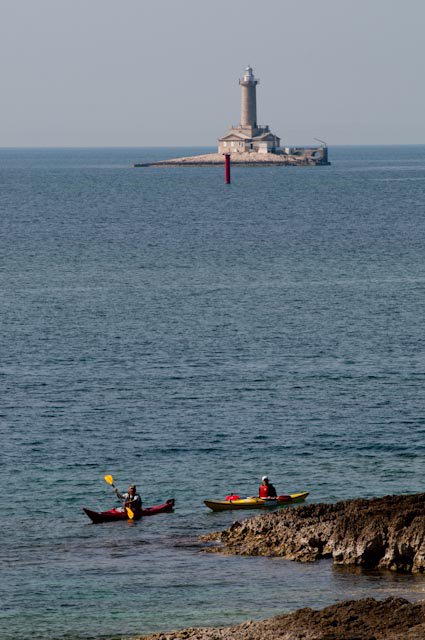
Time to head north at the southernmost part of the Istrian Peninsula, Cape Kamenjak.
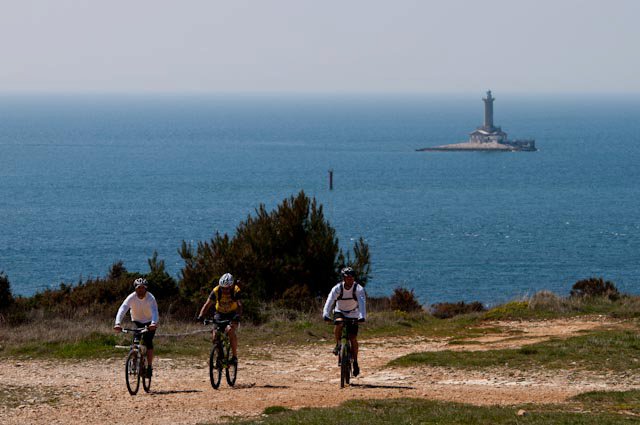
After more than 100 km of sea kayaking, the journey hit dry land for the first time, with the kayak exchanged for a bicycle. Destination Pazin, some 60 km away.
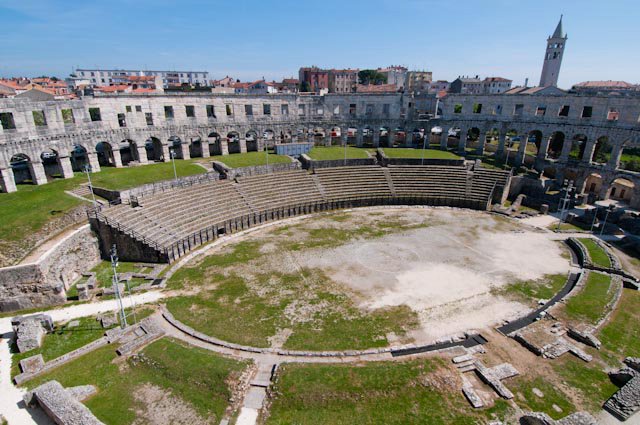
One of the most impressive and important tourist attractions in all Croatia had to be visited along the way. The outstanding Pula Area, the sixth largest Roman amphitheatre in the world.
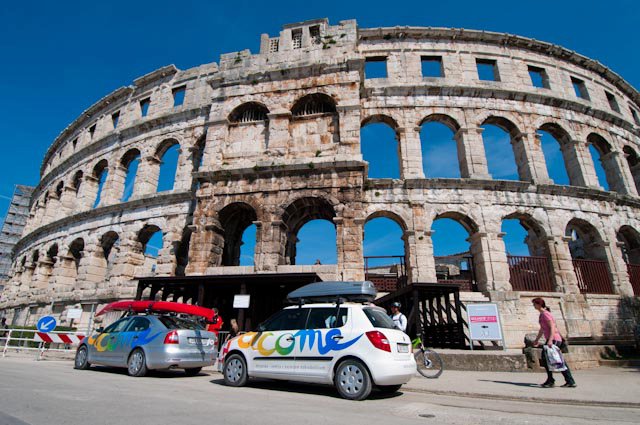
Did you know that this ancient treasure has been used for some of the most innovative modern-day tourism projects, including an ice-hockey match, gladiator fights and concert venue for the likes of Sting and Leonard Cohen?
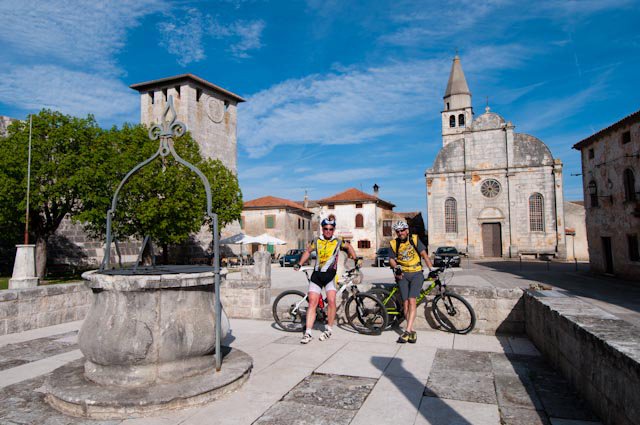
Cycling the green hills of Istria with its idyllic historic mountain villages is an increasingly popular attraction, and no wonder with beauty like this. A quick stop at St. Vincent.
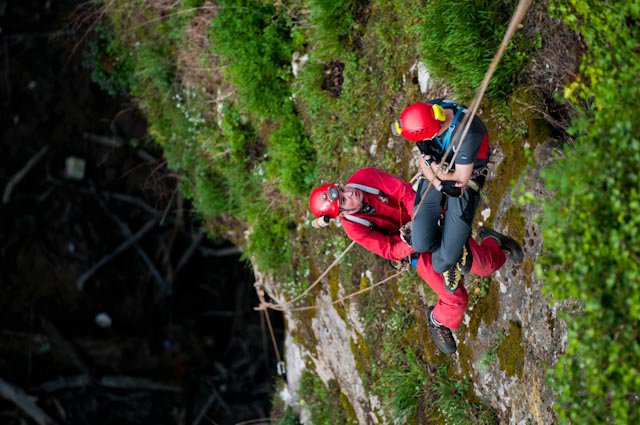
Final stop Pazin, but there was no time to rest just yet. One more kilometre to go, with a little speleo-alpinism at Pazin Pit, quite a change from paddling the calm waters of the Adriatic.
A key part of the project was promoting tourism, and the official website has details of the key places visited during the day. Brijuni.
Pula and Pazin.
You can see the entire project on the Welcome website, as well as much more of Luka Tambaca's stunning photography on the Welcome Facebook page.
Tune in tomorrow for Day 4, as Lacko moves from Pazin to Labin by bike and kayak.
To follow the whole project from the start, follow the dedicated TCN page.
World's Biggest Welcome in Croatia: Day 2 - Porec to Brijuni (Kayak)
March 29, 2019 - Putting Croatian adventure tourism on the map, with the biggest welcome in the world. A little kayaking on day 2 from Porec to the Brijuni islands via Rovinj.
An idea to celebrate the extraordinary potential of adventure tourism the length and breadth of the Croatian coast. As TCN explained in the introductory article, back in 2011, Daniel Lacko and his team's vision was to create a route which mapped out on GPS the world Welcome from Savudrija on the border with Slovenia, to Dubrovnik in the south, to showcase the different types of sporting challenge that could be enjoyed in this hospitable tourist nation. Some 2500 km in total.
After a first-day kayak from Savudrija to Porec, day two was also on the water, and it was an early start for Lacko carrying his kayak through the historic streets of gorgeous Porec.
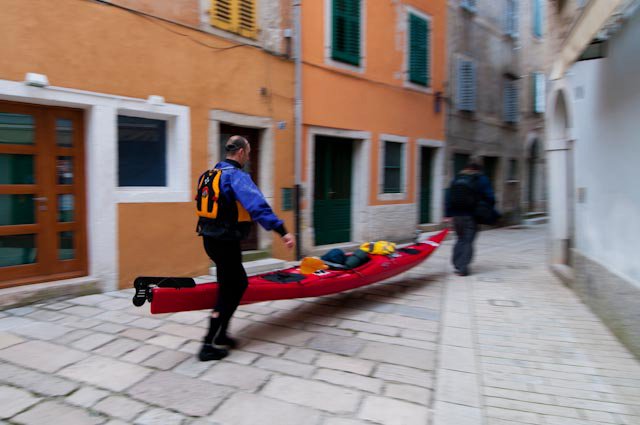
The challenge for Day 2 - 45 km of kayaking from Porec to the Brijuni islands via Rovinj.
There would be many different disciplines on land, sea, lake and river ahead, but the project started with kayaking along the Istrian coast.
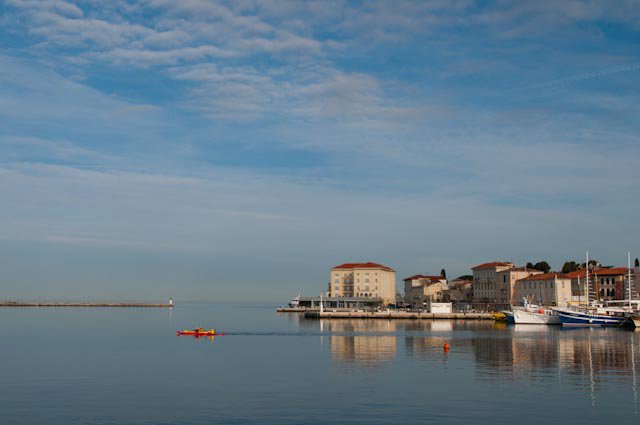
A morning farewell to gorgeous Porec.
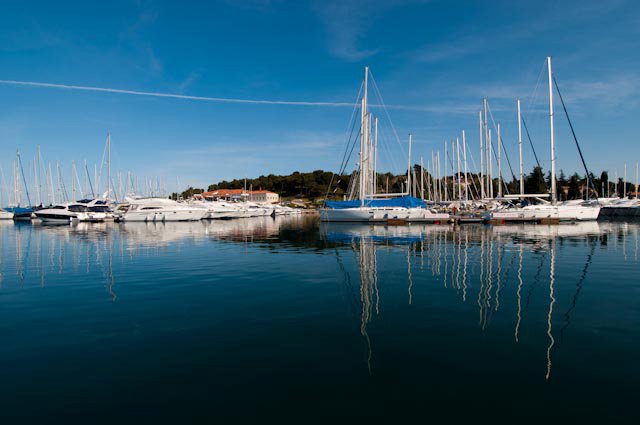
Sailing is an important part of Croatia's tourism offer, with the Istrian peninsula dotted with marinas - paddling in Vrsar marina.
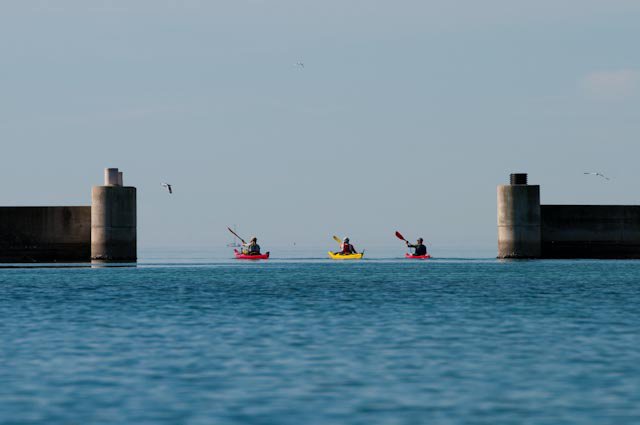
And back out again into the open sea.

The next tourist jewel is one of the gems of Coratian tourism - the peninsula walled stone town of Rovinj, which has more overnight stays than anywhere else in Croatia. But not many tourists arrive by kayak.

The timeless backstreets of one of the most beautiful towns on the Adriatic.
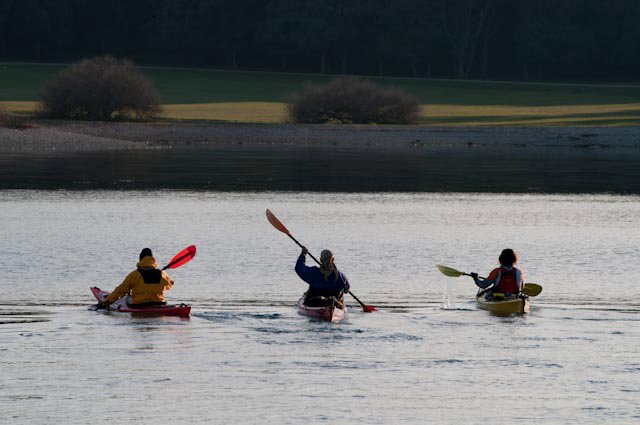
And from Rovinj to another national treasure - Brijuni National Park. Apart from its natural beauty, it is also home to some rather unusual animals, including zebras, an elephant and Shetland ponies.

Tito used Brijuni as his base during his rule, and he hosted more than 60 world leaders here, many of whom brought indigenous animals from their countries as gifts. I am not sure which is more unusual - the collection of living animals, or the stuffed animals who did not survive the relocation. Here are my impressions from a visit six years ago.
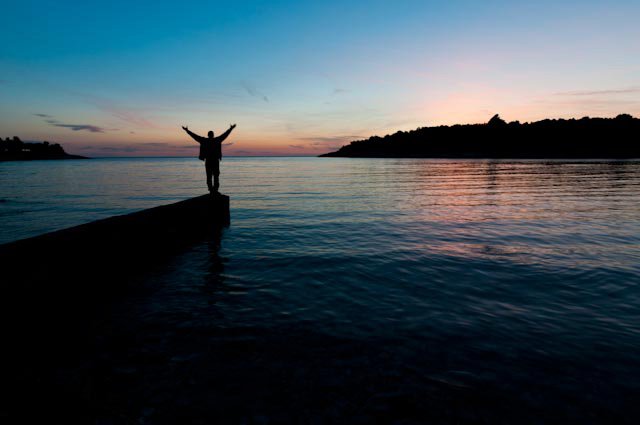
This being the Adriatic, most days end with sunsets like these to mark the end of another perfect day.
A key aspect of the Welcome project was to promote Croatian tourism, and the official website presents information on the main sites visited. Porec.
Rovinj and Brijuni.
Tune in tomorrow as Lacko kayaks to Pula, cycles to Pazin and then indulges in a little speleo-alpinism at Pazinska Jama.
You can see the entire project on the Welcome website, as well as much more of Luka Tambaca's stunning photography on the Welcome Facebook page.
You can follow TCN coverage of the whole journey on our dedicated page.
Meet 6 Unique Croatian Islands of Outstanding Beauty
October 9, 2018 - Croatia has more islands (some 1,244 in all) than some people have had hot dinners, and some of them are truly unique and spectacular. Meet six of the most unusual on the Adriatic.


